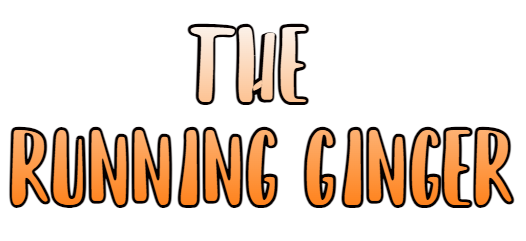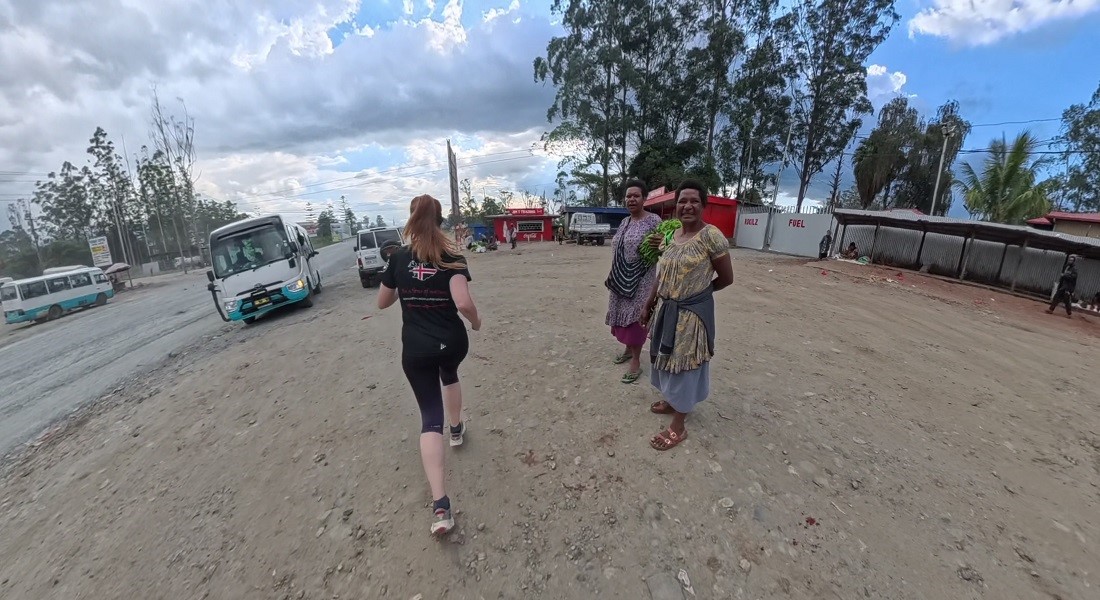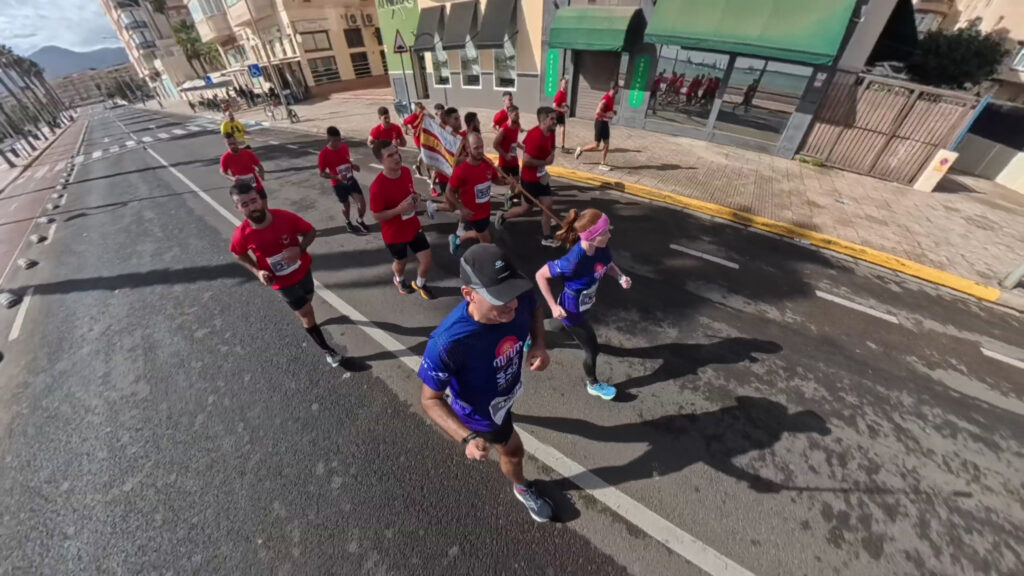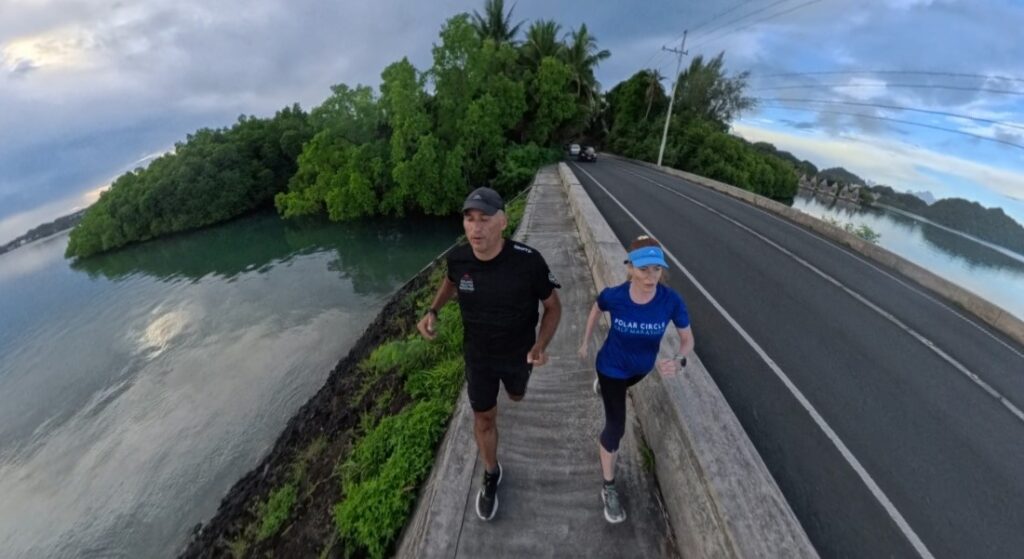17th of August, Mount Hagen. Papua New Guinea.
When we traveled to Papua New Guinea to witness the legendary Mount Hagen Festival 🌈, a breathtaking explosion of colors, culture, and dance, we also laced up our running shoes!
We saw what it felt like to jog through the highlands at 1,700m altitude. Between the cheering locals (some still in face paint from the festival), pigs on the roadside, and dramatic lightning across the sky, it turned into one unforgettable 5K run 🏃!
And not happy with that, days later we run at even a higher altitude!
We ran 7k from the misty heights of Rondon Ridge down to the bustling Holy Trinity Teachers College in Mount Hagen.
Starting at 2,300 meters on cloud-forested Kum Mountain, we descended over 500 meters past rainforest trails, coffee gardens, metal bridges, and cheering locals, with panoramic views of Mount Giluwe and Mount Hagen Volcano unfolding along the way. A challenging downhill run, yes—but also a cultural journey stitched together step by step.
TLDR; “too long, didn’t read”
- I just want to run! Take me to our RUN in Mount Hagen or our RUN in the mountains.
- I have 1 minute. Take me to USEFUL INFORMATION.
- Running is my excuse for travelling. Take me to TRIP.
- Running is my excuse for eating. Take me to CARBOLOADING.
- I want to know what to read on the plane. Take me to ONE BOOK.
#RunningInPapuaNewGuinea #WhereToRunInMountHagen #MountHagenFestival #GuideToRunningInPNG #TravelAndRun #TrailRunningAdventures
Why Traveling to Papua New Guinea and Mount Hagen in particular is a hidden gem for the most adventurous runners 🏃♂️🌍
If you’re a traveler with a passion for running off the beaten path, most literally, then Papua New Guinea (PNG) should be at the top of your bucket list.
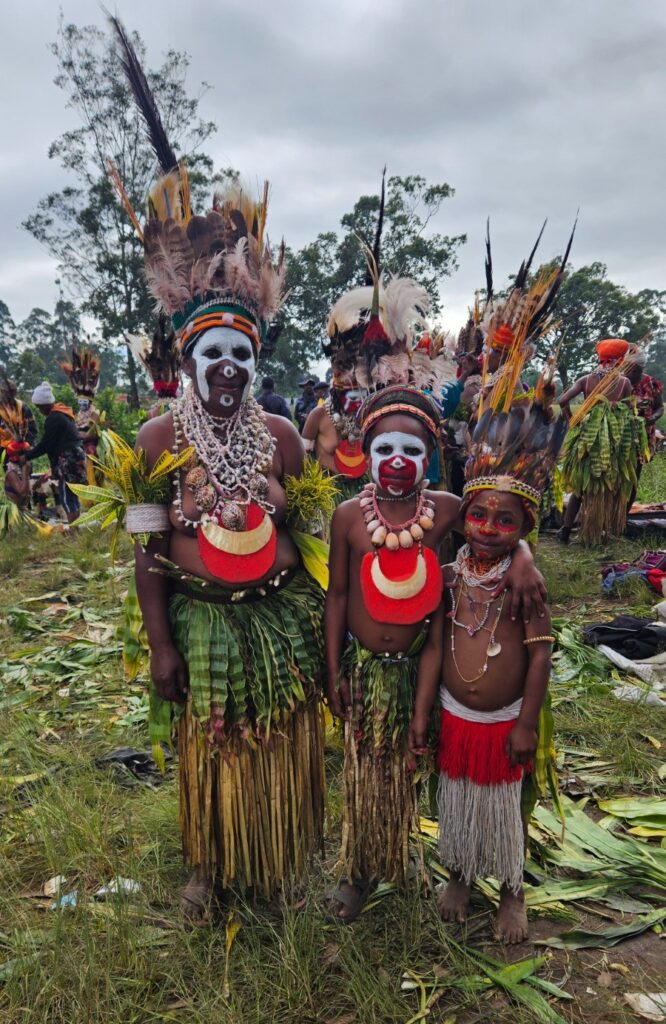
It was in my bucket list for more than 30 years, since I was a kid and I saw the country’s pavillion in the 1992’s Expo in Seville. Can you believe that?
A trip 33 years in the making!!!
This wild, untamed country in the southwestern Pacific is unlike anywhere else on Earth. It is not easy, it is not particuarly safe, but at the end, it is an adventure! Home to over 800 languages, dramatic highlands, ancient tribal cultures, and untouched landscapes, PNG offers a truly raw, authentic travel experience.
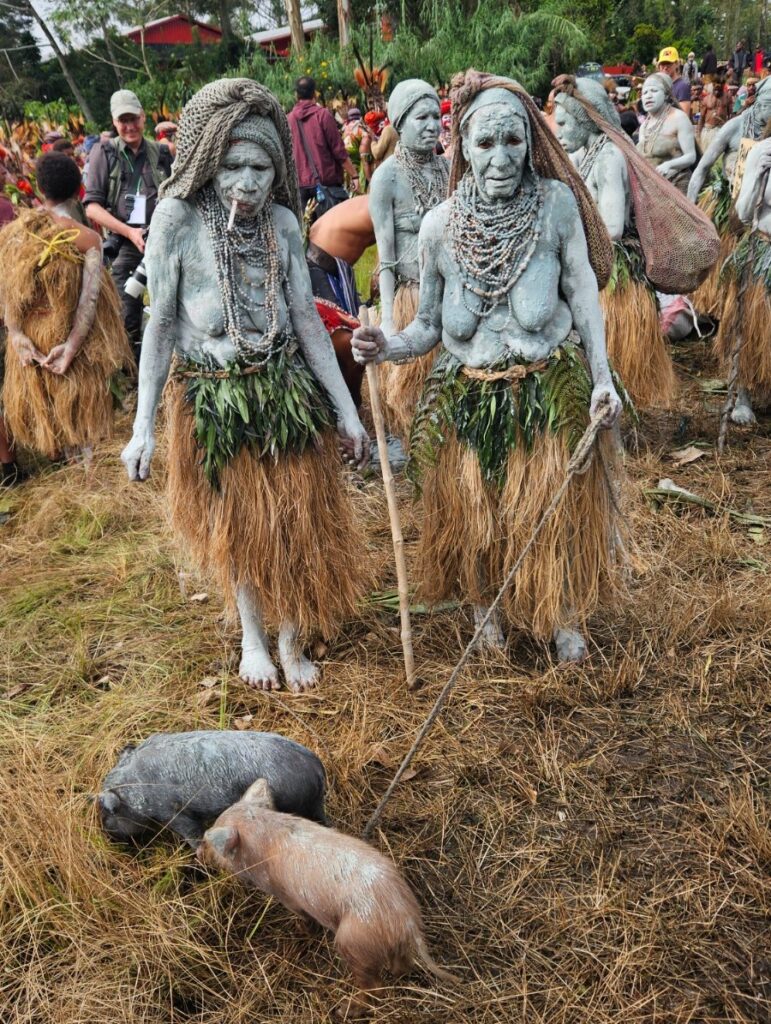
And for runners? It’s an adrenaline-fueled playground where your feet meet mountains, mist… mystery… and some dose of danger.
🌍 The Trip 📷
Logistics: getting to Papua New Guinea
For PNG (I’ll use the initials as everyone here does!) you need a visa. We got ours online 💻 in advance and had no problem at all.
We flew with Air Niugini (until then I hadn’t realised that’s how “New Guinea” actually sounds in English, isn’t it funny?), one of the two main airlines in PNG. The other is PNGAir, which we were about to fly with next.
Air Niugini made us check in our suitcases and then put on quite a “show” redistributing the weight of our hand luggage so each one would be under 8 kilos. We moved the computers from Roger’s bag to mine, passed the test, and then put them right back into Roger’s bag. The Filipino ground staff of Air Niugini were extremely thorough, I have to say!
Flying Air Niugini
The airplane was completely full and the seat pitch was so tiny that my back and legs hurt 😣. I couldn’t sleep at all. The flight was 5 hours and 30 minutes, so definitely not ideal. But, silver lining: the chocolate and walnut muffin 🧁 in the meal was surprisingly good!
Downside: no onboard entertainment 🎧.
So we entertained ourselves with sudokus, my book 📖 and the airline magazine. The book, “Beat not the Bones”, was captivating. Some of the “white” characters are really well described, and the author dives deep into how colonial-era outsiders perceived the “savage” cultures of these “unpatrolled” areas. Right after WWII, much of PNG was not only unpatrolled but largely unknown. And feared. As the characters often repeat: “They live in the Stone Age.”
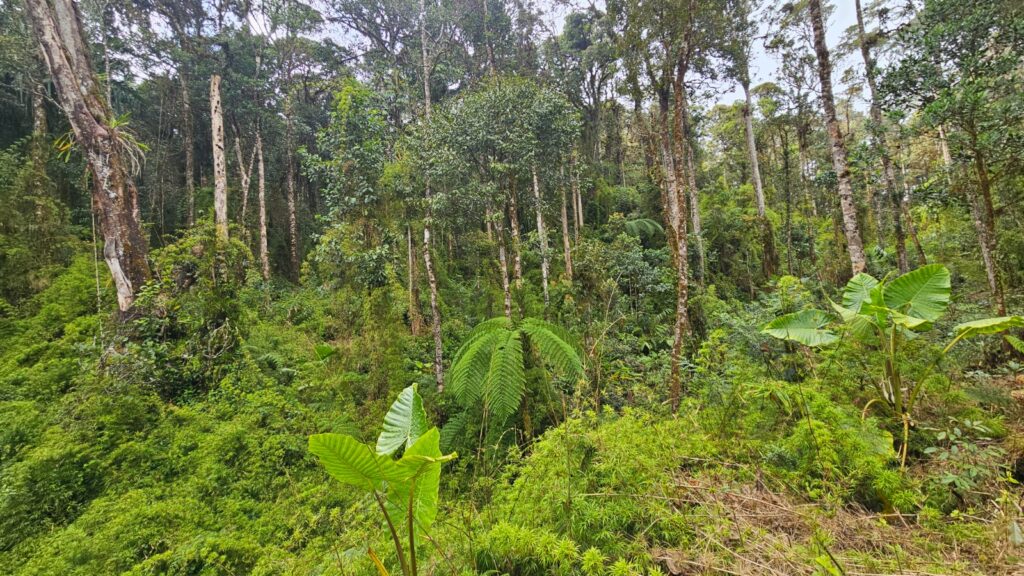
Running culture in PNG – yes, there is one!
The in-flight magazine taught me a lot about PNG’s history and everyday life. To my surprise, I discovered there are actually two running clubs in Port Moresby: the Harriers and the Road Runners. They organise public runs every Saturday 🗓️ in different parts of the city!
This was a really nice discovery because I had been searching for marathons and realised there isn’t an official one in PNG at the moment (or maybe I should say… not yet? 😉). So I thought running wasn’t really a thing here. Turns out, I was wrong!
However, we didn’t see a single runner during our week in the country….
Arriving, local fauna and Papuan friendliness
At customs, a very kind officer asked if I was heading to Mount Hagen. When I said yes and mentioned the Mt. Hagen Festival 🎭, he smiled, told me it was “amazing,” and reminded me not to forget my camera . Expectations: officially sky-high!
We also had to declare food. We had fried salted peanuts and “Huesitos” (Spanish chocolate bars) with us — essential energy for our runs. Luckily, another friendly customs officer waved us through with no issues. I had been ready to say goodbye to my “Huesitos” 👋🍫, but they made my day! It’s nice to see common sense at work.
Port Moresby
We arrived in Port Moresby at 5am on schedule, and my very first introduction to PNG was a giant cockroach in the airport bathroom. Later in the city, a spider landed on my hand — so yes, the local fauna here wastes no time making itself known! 🕷️
I’d read in travel forums that Port Moresby could be “dangerous,” so I asked the agency helping us with the Mt. Hagen Festival to pick us up and give us a quick city tour during our 6-7 hour layover before our 2pm flight to Mount Hagen.
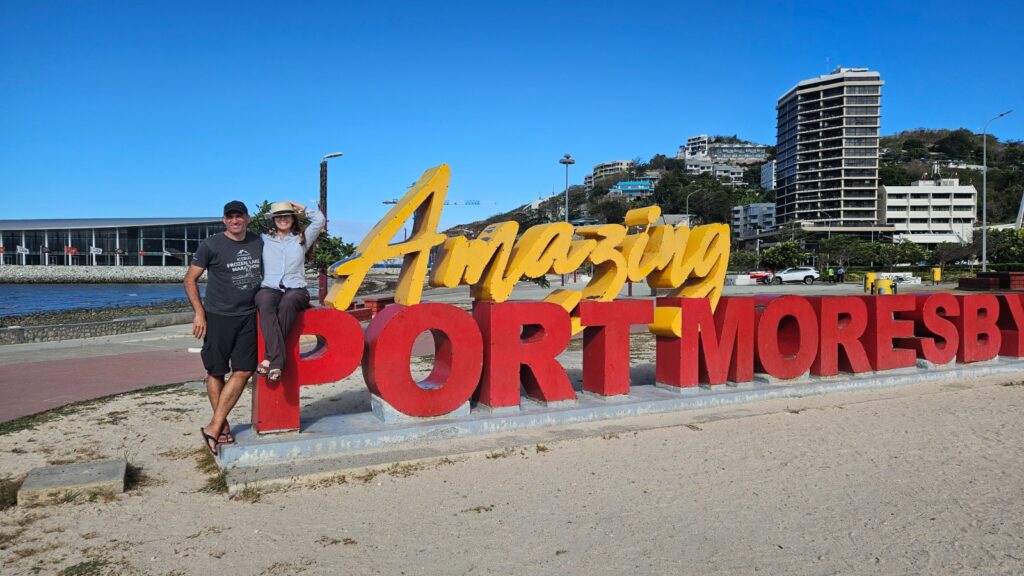
The guide showed up more than an hour late, but honestly, no big deal. It was our first taste of the Papuan way of life: “easy, easy.” Our guide and cheerful driver, Elvis, explained that compared to Europe, people here are more relaxed… and yes, often late …
While waiting, we charged our phones 🔌 and withdrew cash from an ATM.
Quick tip: there are plenty of ATMs at the airport, and they work perfectly.
And then it was time for the whirlwind…
“Express Tour of Port Moresby”
So, off we went on a whirlwind 6-hour tour 🚐! Travel blogs often describe the city as “not particularly interesting”, but I disagree—the parts we saw were definitely worth it.
Viewpoint and houses on the water 🌊
On the way to the War Cemetery, we stopped at a viewpoint with beautiful panoramas of the city. Here I first saw the houses built on the water—later, at the fish market, we’d see them much closer. Port Moresby looked elegant and calm, with turquoise waters shining below. Just as I’d imagined: a far-east port, a true gateway to exotic, once “unpatrolled” regions.
Port Moresby Beach and the APEC Haus 🏖️
Next, we visited the beach and the APEC Haus, built for the international APEC conference in 2019. We took photos 📷 in front of the huge “Amazing Port Moresby” sign. Ironically, the sign is bigger than the city is “amazing”! 😂
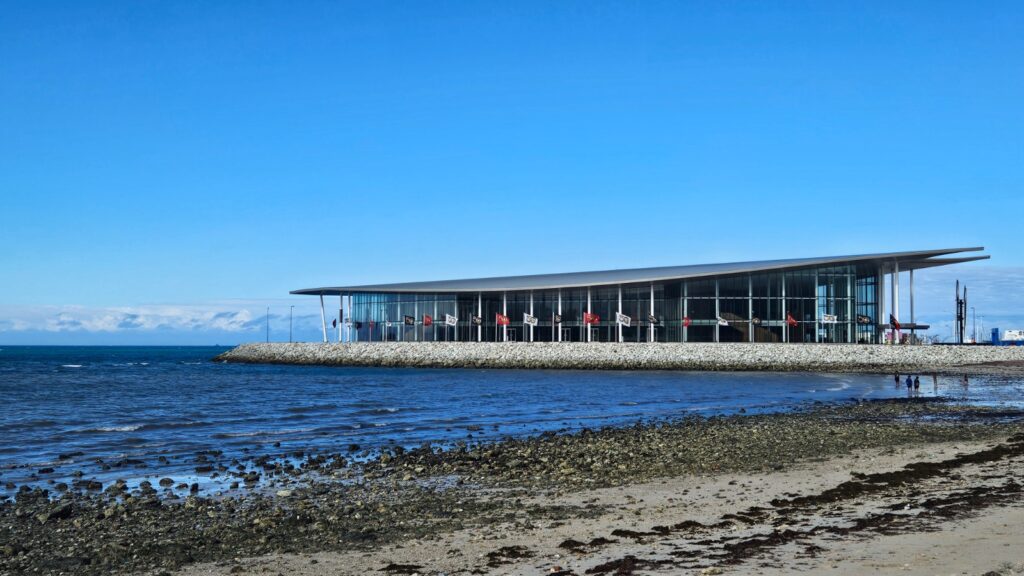
Some locals were playing football ⚽, and I told Roger it would make a perfect place for a run. The area itself felt nice enough and was starting to fill with fancy apartment buildings. Hopefully it doesn’t turn into a “Papuan Benidorm”.
Wholesale Market and chewing betel nut 🍃
One of the first things we noticed about both our guide and driver was their red teeth. They explained it was from chewing “betel nut” (a local stimulant). At the wholesale market, where city shop owners stock up on goods, we saw it sold everywhere. They offered us to try, but we politely declined—no vampire smiles for me 🧛!

The wholesale market itself was buzzing—so alive! 💥 It reminded me of African markets: colourful, chaotic, full of bargaining and laughter.
Koki Fish Market 🐟
The highlight of our tour was Koki’s Fish Market. Arriving around 8am, there were no tourists, just locals. Elvis, our driver, bought us a spiced fried calamari skewer—delicious! 😋

The scene was unforgettable: floating houses on one side, fishermen arriving in canoes on the other 🚣, kids cheering, grandmas selling peanuts, dogs lazing 🐕, women shouting to sell fish, and us carefully trying not to slip on the wet floors.
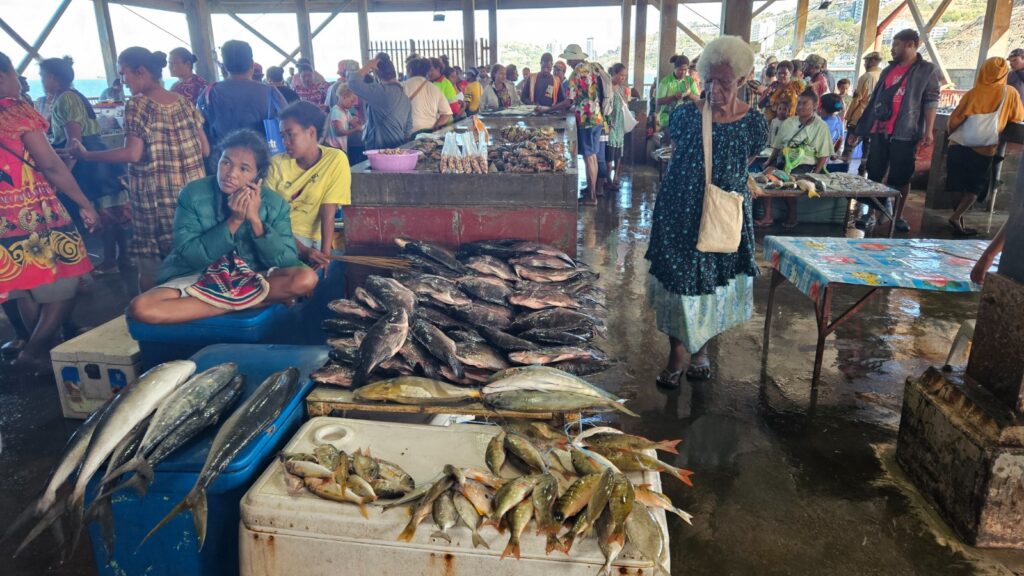
The fish itself was stunning—parrot fish in bright colours, huge tuna, even live crabs. Every sense was engaged: the smells, the sounds, the sights.
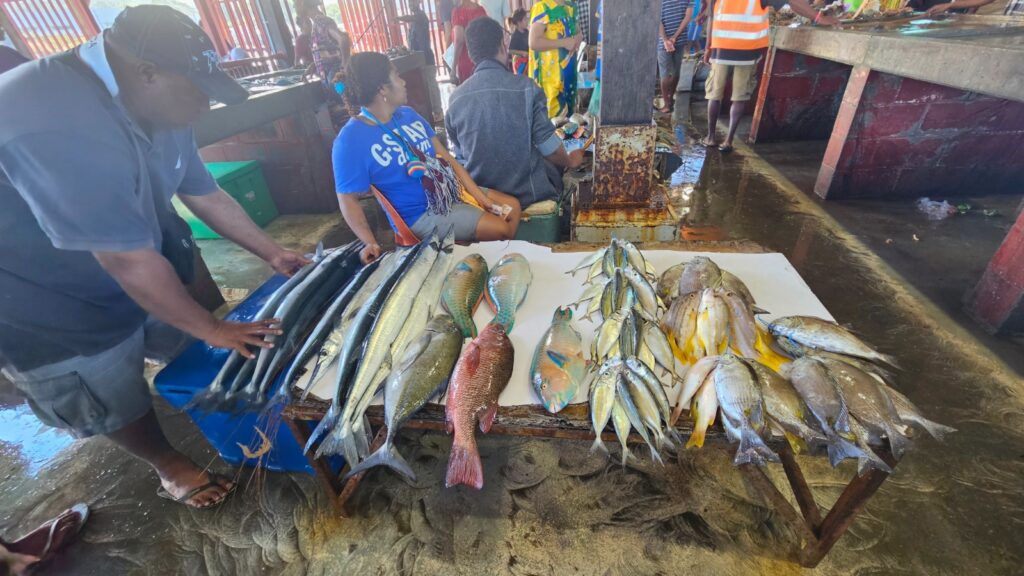
War Cemetery 🌺
From the lively market, we moved to the solemn War Cemetery. Perfectly maintained, with rows of white stones (many unmarked, just “one soldier”), it was deeply moving.
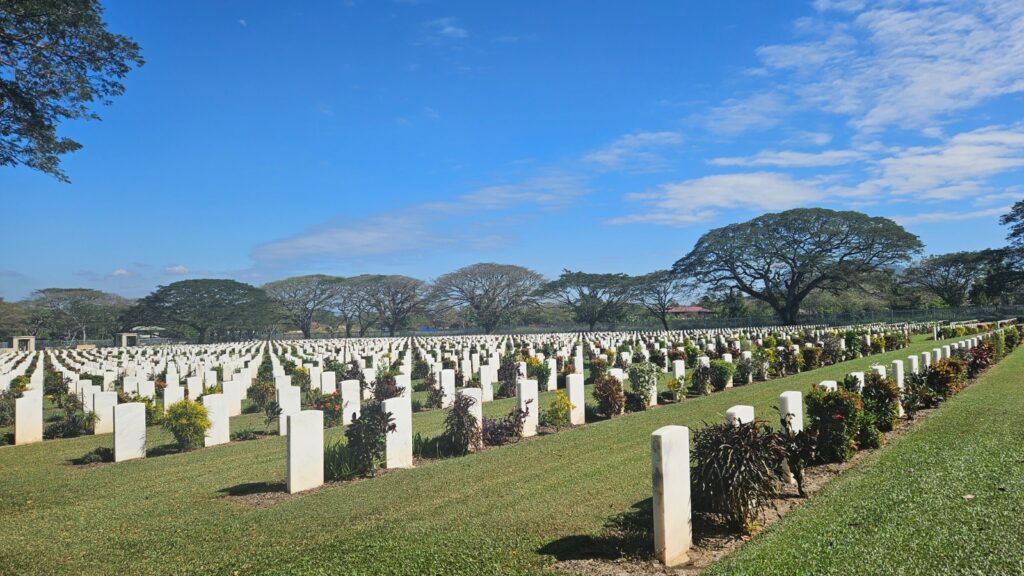
Walking under the blazing sun ☀️ among old trees, we reflected on the young lives lost here during 1942–1945. Graves of boys as young as 14… it was a sobering reminder of history. Australians and New Zealanders visit often, and the registry book confirmed it.
Mount Hagen 🏔️: Culture in the Highlands
If you time your visit right, you can experience one of the most spectacular events in the Pacific: the Mount Hagen Cultural Show, held every August.
💡🏃♂️ PRO TIP: We timed our trip to attend the festival and so we could later run the Sydney Marathon!!
This world-famous tribal festival brings together over 100 local tribes from across PNG in a mind-blowing explosion of color, music, and tradition. 🎭💃
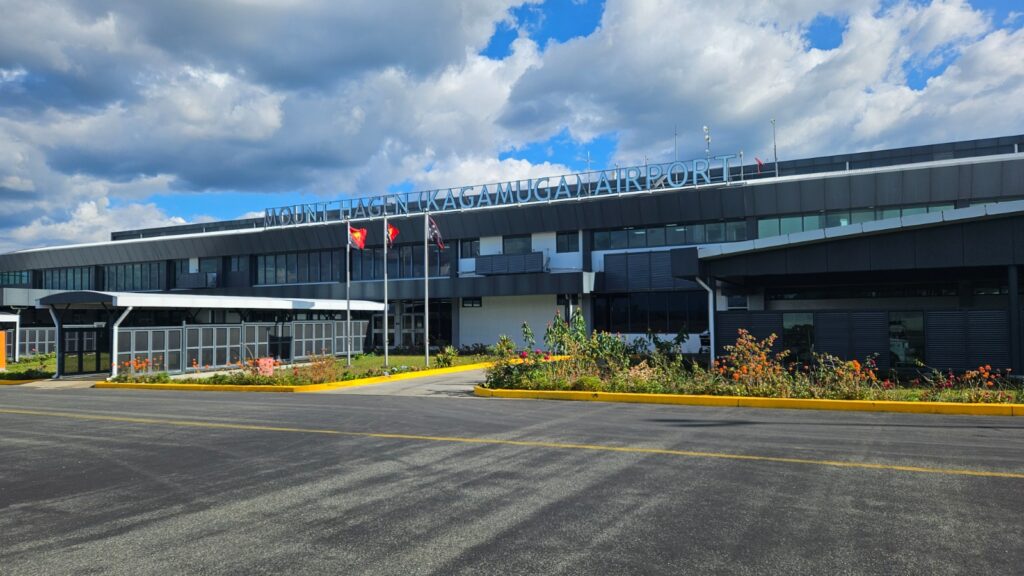
Dancers adorned with elaborate face paint, feathers, and body art, known as “sing-sings”, perform ancient rituals and showcase their unique cultural heritage. It’s not just a festival; it’s a once-in-a-lifetime glimpse into the soul of Papua New Guinea. Many travelers plan their entire trip around this event, and it pairs perfectly with a highland running adventure. Imagine starting your day with a cool mountain run, then witnessing one of the most vibrant cultural displays on the planet. 🤯🏃♂️🔥
Arriving at Mount Hagen 🏔️
Our Air PNG flight to Mount Hagen was smooth and uneventful. In just over an hour, we were soaring above rugged mountains, winding rivers, and endless greenery 🌿 before landing at the small airport, proudly decorated with Papuan flags 🇵🇬.
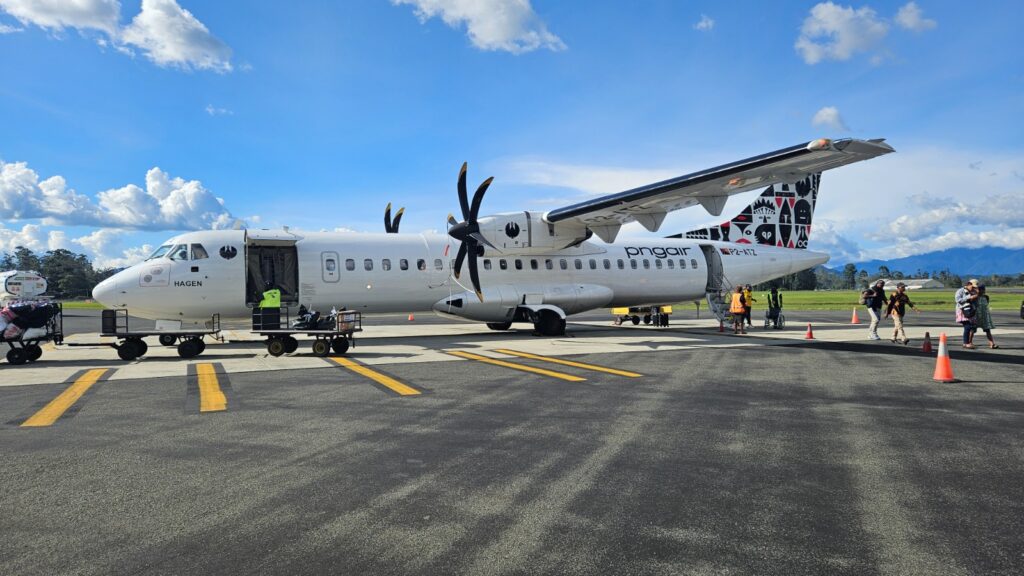
We were the only non-locals on board, and I think everyone was curious about us—they probably assumed we were latecomers to the festival!
Our local guide “Junior” welcomed us at the airport, wearing a colourful flowery shirt 🌺, a style clearly loved in PNG. From there, we quickly headed to our hotel: the Highlander, the oldest (and fanciest) in town.
The Highlander Hotel 🏨
The place was fully booked for the festival and buzzing with activity—dances, singing, karaoke, even a buffet we couldn’t wait to try. After such a long journey, I was starving and eager to taste local food 🍲.
Mount Hagen streets
And then came the real magic. Mount Hagen was alive. Streets were absolutely packed—hundreds of people everywhere, many with their faces painted 🎨. The atmosphere was vibrant, colourful, and electric.
Markets and streets reminded me of a mix between Asia and Africa, with improvised stalls under colourful parasols, locals resting in the shade, tyre shops at every corner, and life spilling onto the roads.
One of my favourite moments? Spotting a man with his hair tied up in a bun decorated with two Papuan flags!
The festival energy was already in the air, and I couldn’t wait to experience it fully the next day.
Mount Hagen Festival 🎉: A Cultural Spectacle Like No Other
The reason we travelled to Mount Hagen was to attend its famous Festival.
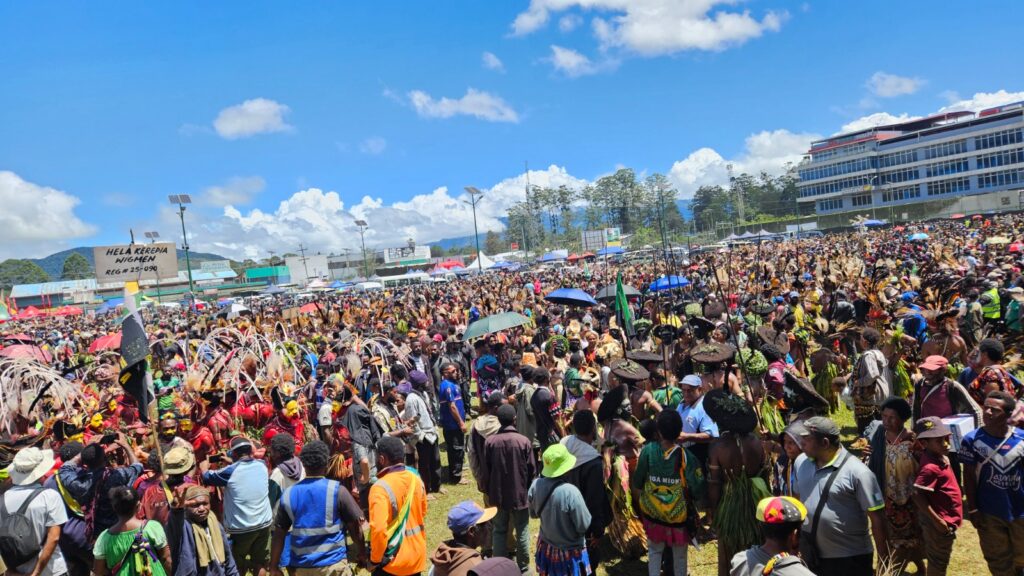
I had read about it online, seen countless pictures, and was completely captivated by what looked like one of the world’s most colorful cultural experiences.
The Mount Hagen Festival, held every year in Papua New Guinea’s Western Highlands 🌄, is one of the country’s most vibrant and iconic cultural events . First organized in 1961 during the colonial period as a way to reduce tribal conflict by bringing rival groups together in celebration ✌️, it has now grown into a spectacular showcase of Papua New Guinea’s incredible cultural diversity 🌎.
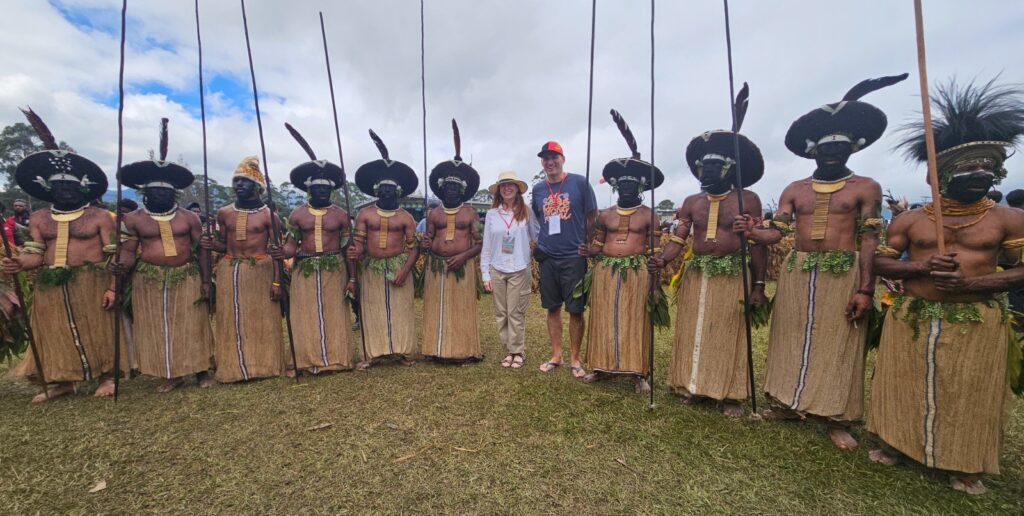
The festival brings together hundreds of tribes from across the country, each performing their “sing-sings”, traditional dances 💃 and songs, in a jaw-dropping display of identity and heritage. The costumes are simply amazing: feathers 🪶, body paint , shells, animal skins … performers turn themselves into living works of art that reflect centuries-old traditions and deep tribal pride 💖.
For me, the festival was an unforgettable experience 🌟. It offered the rare chance to witness the immense cultural variety of Papua New Guinea all in one place.

Even though each tribe has its own language, customs, and rituals, the festival showed how music, dance, and ceremonial dress tie everyone together. With over 800 languages spoken in PNG, this unity is extraordinary!
Watching them prepare!
We got to the festival grounds early at 8am ⏰, but nobody was there yet. So we took a quick drive around Mount Hagen 🚗.
The city itself looked quite poor and a bit dirty, with many locals walking or squatting along the streets. Since it was a Sunday, perhaps that explained why things felt so quiet 🤫. We did find a supermarket open, where we bought water and even souvenirs! One of my favorites was a PNG flag 🇵🇬 with “1975–2025,” marking 50 years of independence.
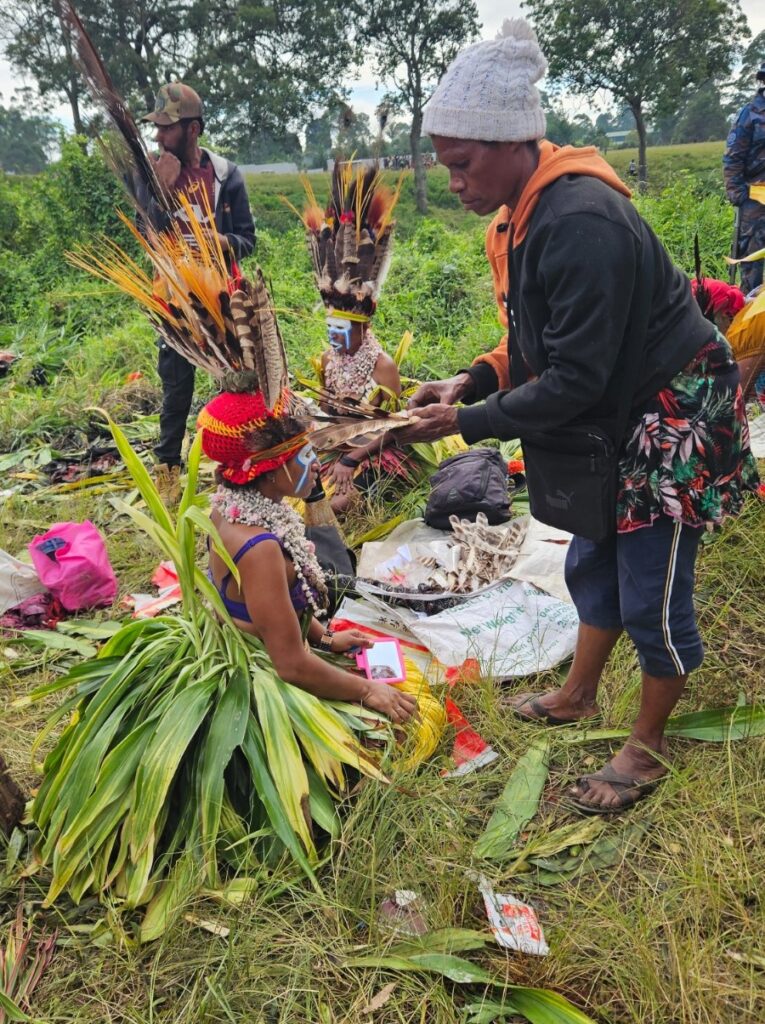
By 8:30 we returned to the festival grounds, but still no tribes. Our guide instead took us to the esplanade by the creek, where hundreds of performers were getting ready. From the very start, I was blown away by the colors 🌈 and creativity. Watching the preparations was an experience in itself: women painting faces, carefully placing feathers one by one in headbands 🪶, even a tribe painted entirely in white with two pigs 🐖, also painted white!

At one point, two older women, cigarettes in hand, posed for us with big smiles 😄. Many locals smoked, and we later saw performers dancing with their faces painted… and smoking at the same time!
🌎 The international vibe
There were plenty of tourists, but not so many that it felt overcrowded. This was no Florence in August 🙂. We could move around freely, taking pictures 📸 without being squeezed by crowds.
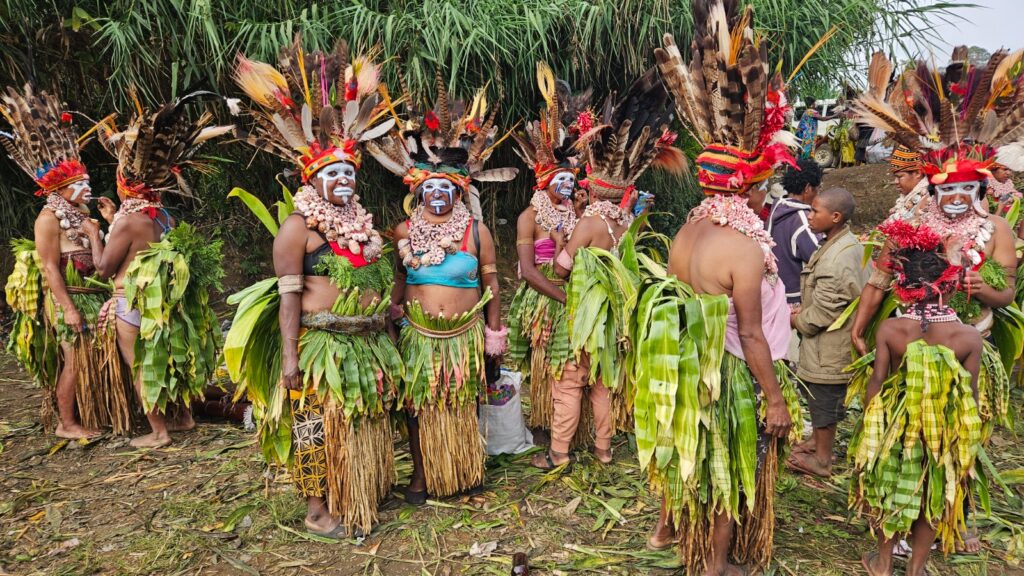
The speaker interviewed visitors, like a Californian traveler and a couple from Poland 🇵🇱, all raving about how incredible the festival was. And they weren’t exaggerating!
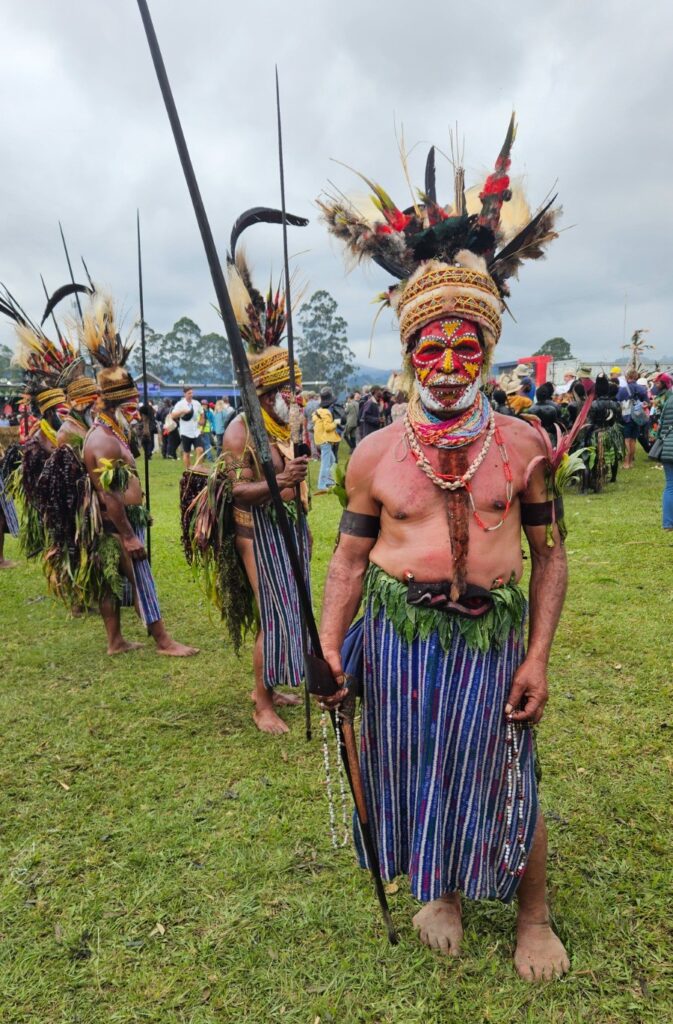
I’ll never forget walking among the tribes: the shouting, the drumming, the energy ⚡. I even joined in for a quick dance, jumping up and down, less than a minute and I was already tired 😅. Great cardio!
The whole community was involved, and you could buy crafts too. I picked up earrings made of kina (yes, the same name as PNG’s currency). Locals complimented me, though their teeth were bright red from chewing betel nut 🍃—a very common tradition in PNG, though forbidden at our hotel .
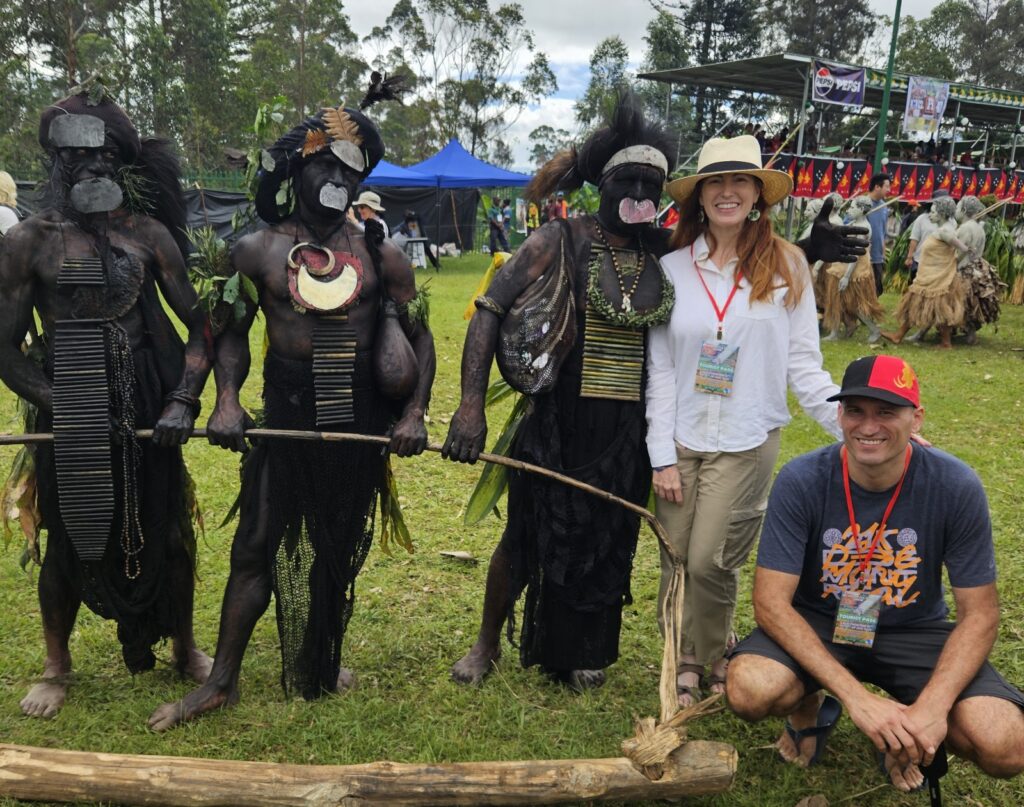
🍃 Chewing betel nut
Known locally as “buai” in Tok Pisin (the country’s lingua franca), betel nut comes from the areca palm 🌴 and is usually chewed with a mustard stick dipped in lime powder made from burnt coral or shells. The mix creates a bright red juice that stains lips and teeth ❤️. Its effect is mildly stimulating ☕, like coffee or tobacco. Beyond the buzz, buai is deeply embedded in PNG’s culture and social life.
🎭 Meeting the tribes
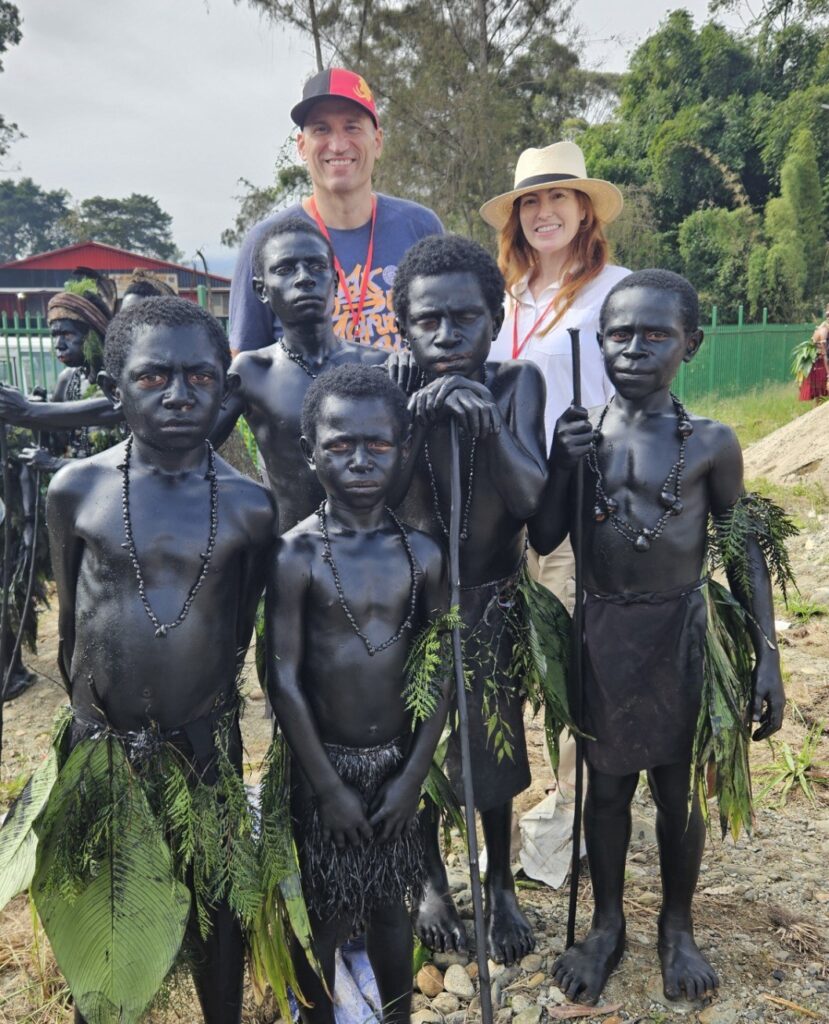
We also bought a small Asaro Mudmen head 👹—one of my favorite tribes!
What made this festival unique compared to others around the world 🌍 was that people would pose for pictures without asking for money . They stood proudly in their traditional attire, danced, smiled, and shared their heritage with dignity.
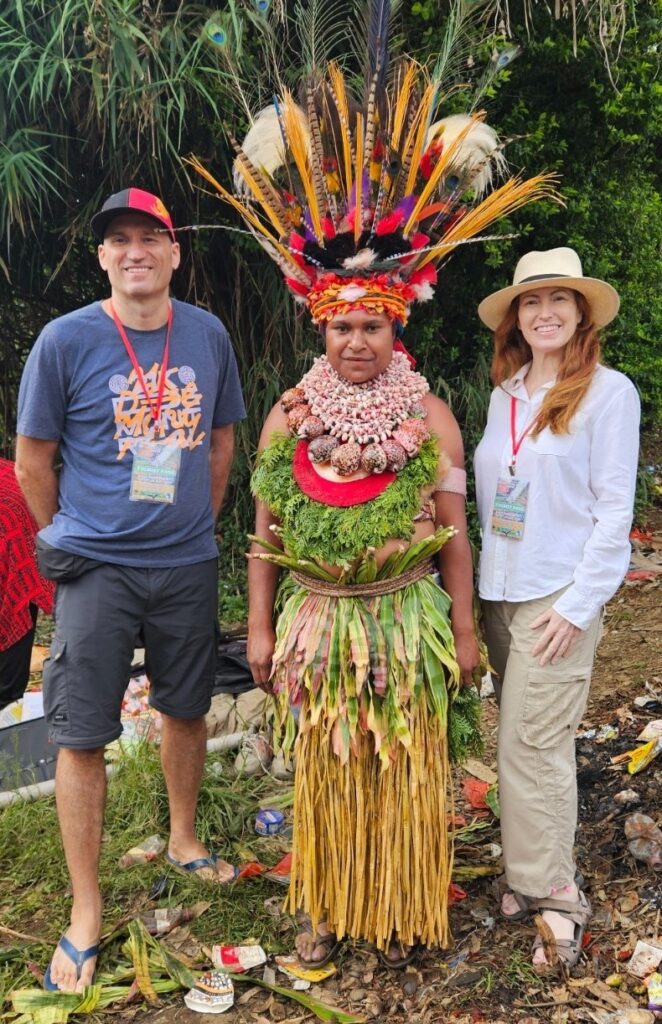
The Asaro Mudmen
The Asaro Mudmen were unforgettable. Covered in grey mud and wearing huge clay masks with exaggerated features 😱, they moved slowly and menacingly, like spirits 👻.
I had seen many pictures of them in the past and researched a lot of travel blogs talking about them, so I was particularly happy to have them in the festival 😍.
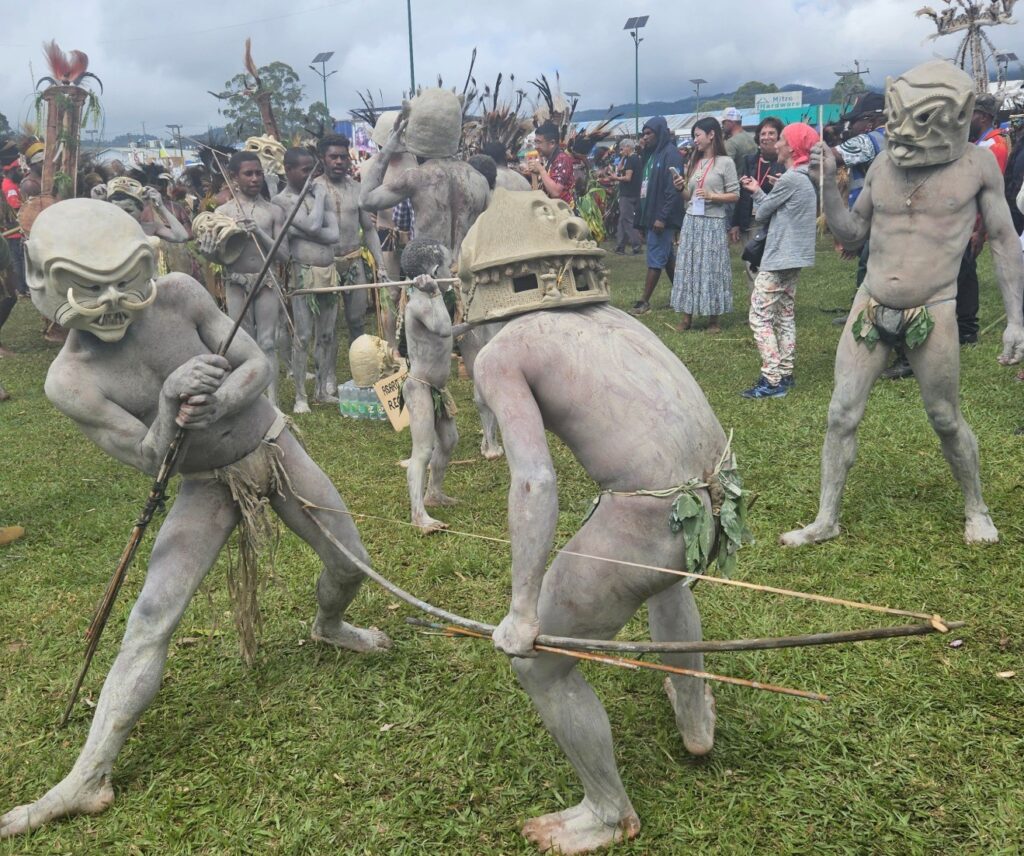
They are part of the Holosa tribe, residing in the Eastern Highlands near Goroka 🏞️. Their unique tradition involves covering their bodies and faces with mud and intricate designs, creating an eerie, spirit-like appearance. This practice stems from a historical event where they used mud and masks to intimidate rival tribes, successfully reclaiming their land.
Their legend says they first used this look to terrify enemies after a battle 🪖, turning mud and masks into a powerful weapon of psychological warfare. Today, they captivate crowds with eerie movements that feel both theatrical and haunting.
The Huli Wigmen
The Huli Wigmen, from the Southern Highlands, were equally stunning. With faces painted bright red, yellow, and white, and wigs made from their own hair, they danced with energy ⚡ and pride 💖.
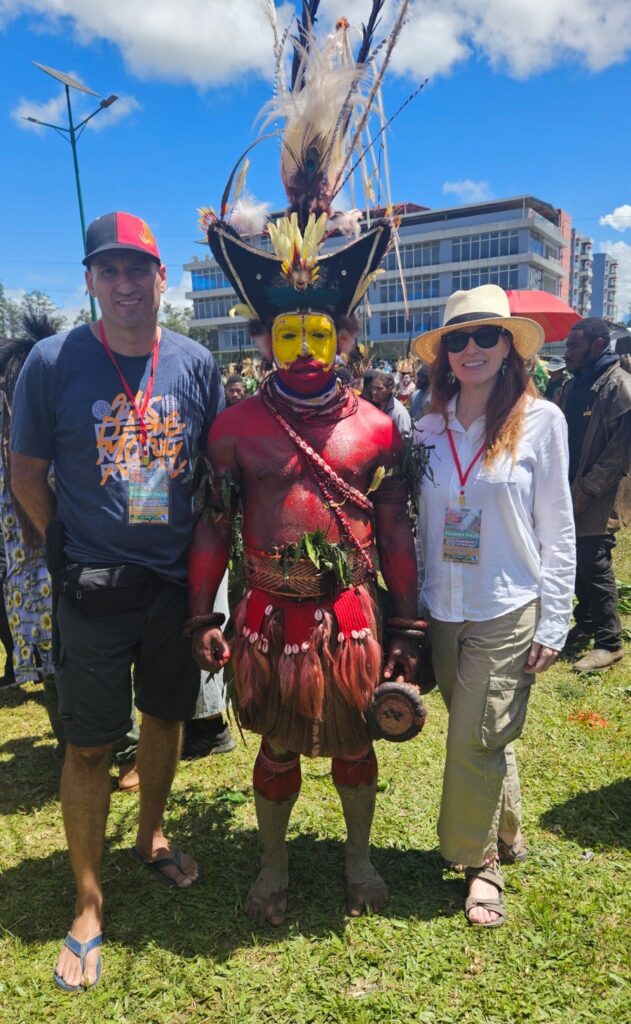
The wigs are perhaps the most famous aspect of Huli culture. Young men live in special bachelor camps called “wig schools”, where they grow their hair under strict rules of diet , discipline , and ritual purity . Once the hair is long enough, it is carefully cut and crafted into a wig, often decorated with bird-of-paradise feathers, flowers, and other ornaments.
Decorated with feathers of the bird of paradise 🦜, their costumes are among the most iconic images 📸 of Papua New Guinea 🇵🇬.
🌄 Birdwatching at Rondon Ridge Lodge, Mt. Hagen
The morning after our arrival, we set off for some serious birdwatching at the legendary Rondon Ridge Lodge 🦜. Perched high at 2,300 meters on Kum Mountain, this lodge offers jaw-dropping views over the Wahgi Valley and the mighty Mount Hagen Range 🏔️.
We had to start bright and early—by 6 a.m. sharp! As our guide Junior put it: “Later, the birds hide.” And he was absolutely right. The mountains were wrapped in a soft misty veil, almost like a floating ethereal lake, and I couldn’t help but feel incredibly grateful to witness it 💙.
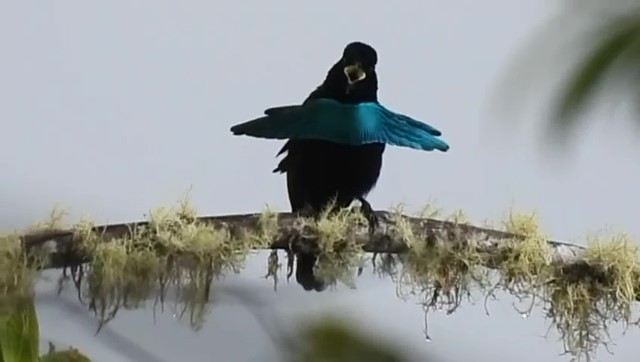
Despite the crisp highland chill 🥶, our patience paid off—we spotted both the male and female Blue Birds-of-Paradise! Truly a once-in-a-lifetime sighting. Along the way, we also spotted several other exotic species (this place is literally a birdwatcher’s heaven).
At the lodge, we met an American birder who was using the Merlin app to tick off species from a checklist provided by the resort—giving me total Cordelia Cupp vibes from The Residence 😂.
Did you know? 🤯 Over 180 species of birds have been recorded here, and a whopping 10 different species of Birds-of-Paradise can be found in the area. That includes the Blue, Superb, Princess Stephanie’s Astrapia, Short-tailed Paradigalla, Brown Sicklebill, and Lawes Parotia—some even right within the lodge grounds!
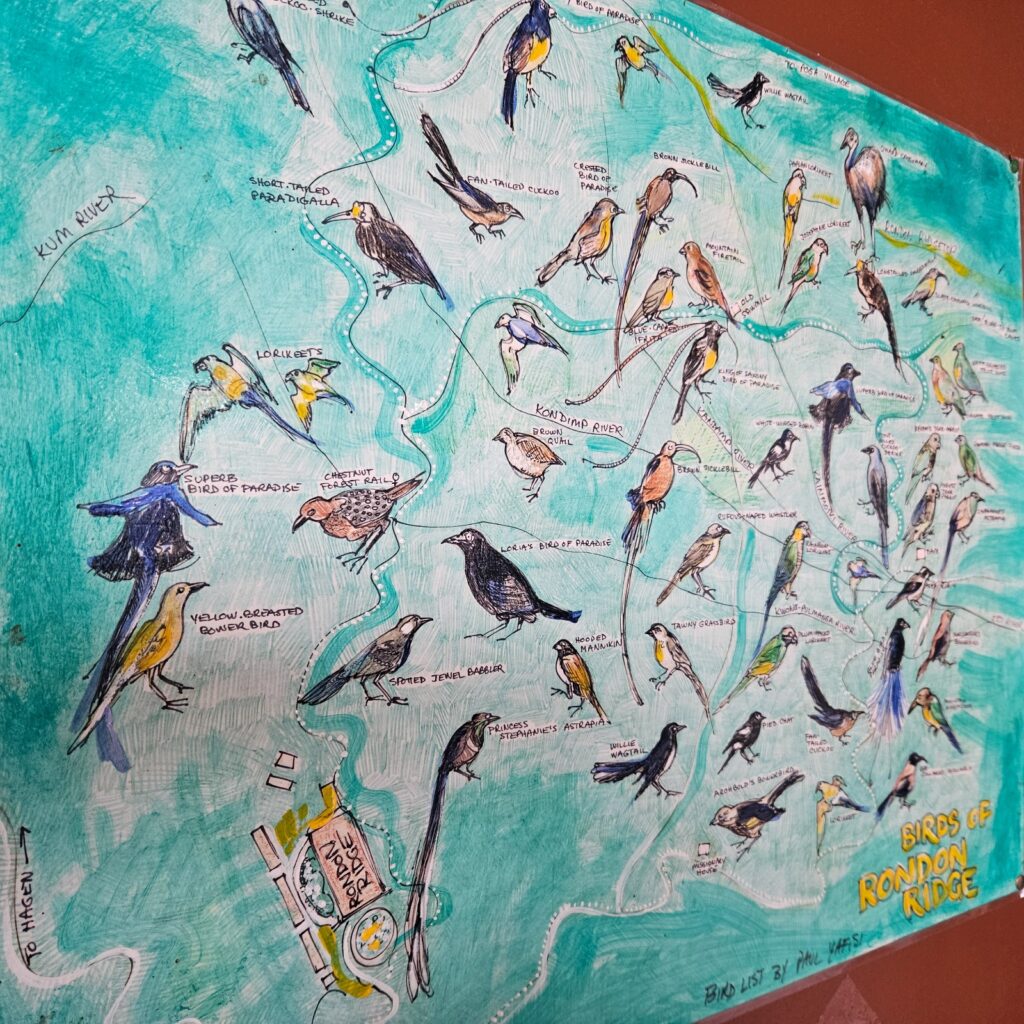
And if birds aren’t enough, you can also go trekking through orchid-filled trails 🌸, explore waterfalls, and soak in the crisp mountain air.
A Physical and Cultural High 🌄❤️
Papua New Guinea isn’t a typical running destination, but that’s exactly what makes it unforgettable. Whether you’re trekking to remote villages, training at altitude, or simply jogging through misty hills surrounded by bird calls and ancient culture, running in Papua New Guinea is as real and rewarding as it gets.
Mount Hagen is more than a dot on the map: it’s a gateway to highland trails, indigenous culture, and transformative travel. For those searching for “Running in Papua New Guinea,” “Where to run in Mount Hagen,” or a full “Guide to running in PNG,” this is where your wildest miles begin.
🏃♀️ First Run 🏃♂️
🏃 Running in Mount Hagen: Safety first!
As a runner, I couldn’t miss the chance to go for a jog in such a unique place. But first, the research was clear: running in Mount Hagen requires caution.
⚠️ Safety concerns:
- Crime is common in Mount Hagen, with robberies and assaults reported.
- Tribal conflicts sometimes erupt without warning.
- Police presence is limited.
Tips for safer runs:
- Run only in daylight.
- Stay updated with local news and your hotel’s advice.
- Avoid flashing valuables.
- Always consider running with a guide.
Our guide, Junior, insisted on coming along. He warned us that alcohol often fuels aggression in PNG. He advised against running in rural areas, so we followed his advice: safety first.
5K in the outskirts of Mt. Hagen
We set off at 4pm along a road leading to Mount Hagen.
The terrain wasn’t difficult and there were no hills, however, it was not an easy one. There was a lot of traffic and some drivers passed by us too fast. And some… were drinking!
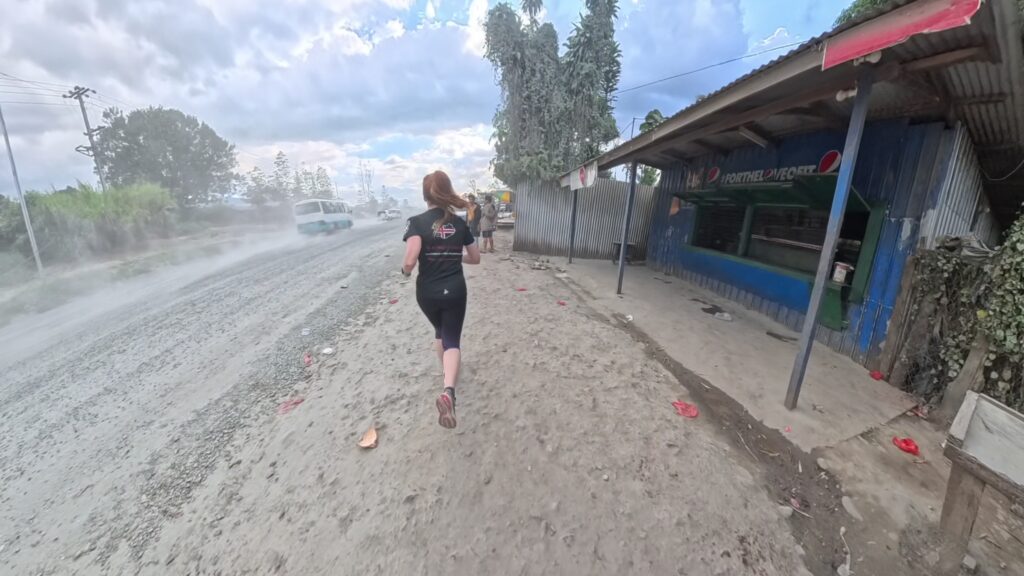
And I remembered how Junior had been talking about the problems with “his fellow papuans” when they drink (“the drunkards like to threaten tourists, he said”). Sadly, this country they seem to have a big problem with alcohol.
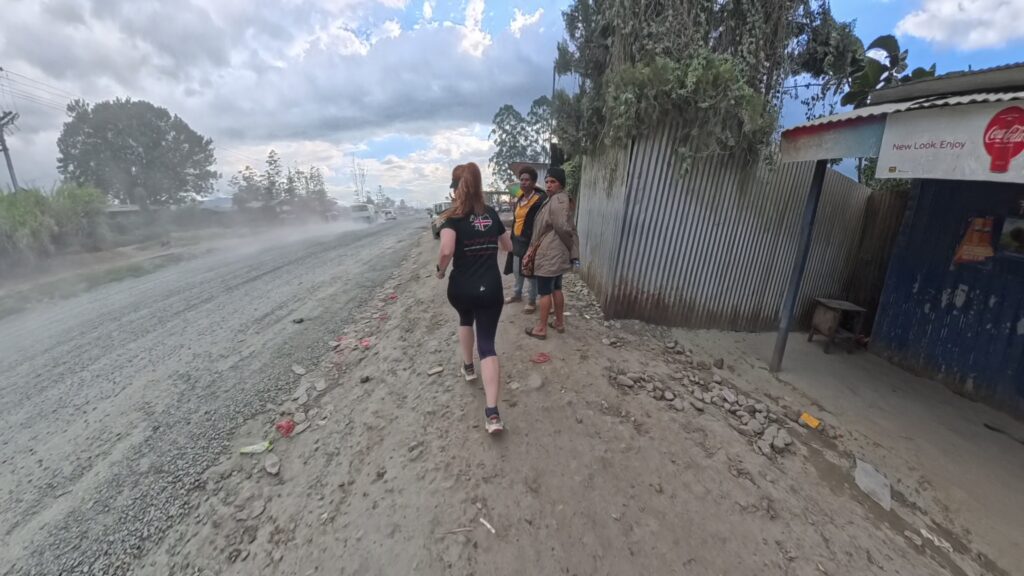
At almost 1,700m altitude, I was gasping after the first kilometer, but slowing the pace helped.
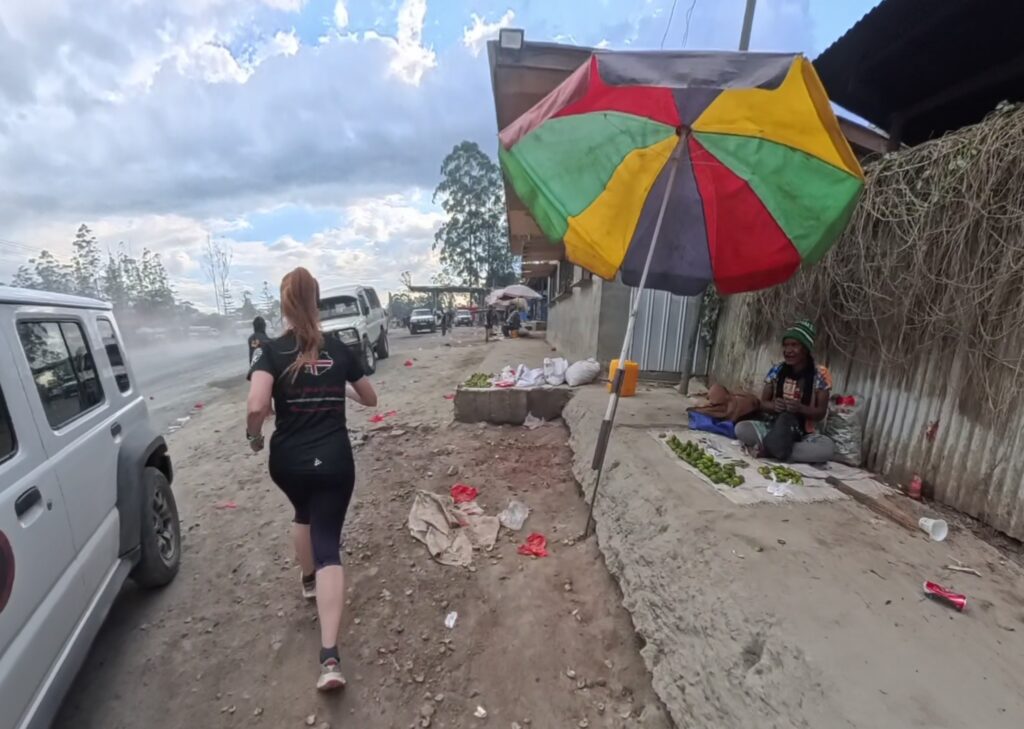
Junior, though a smoker and not a runner, joined us for nearly 2k. Then he quietly retired to be picked up by our van, and joined us for the last 500m. It reminded me of those runners who cheat at the New York Marathon 😂
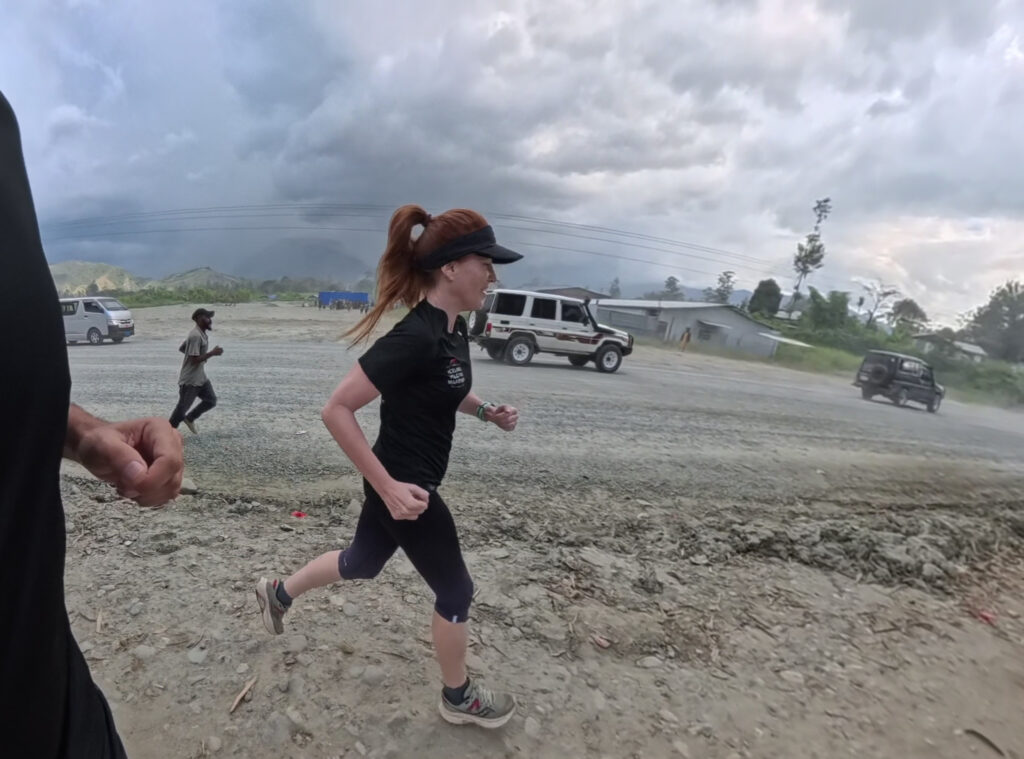
People cheered us on along the way, shouting “Run, run!”. Some still with their faces painted from the festival.
We passed stalls, pigs (Roger was fascinated by their size 🐖),
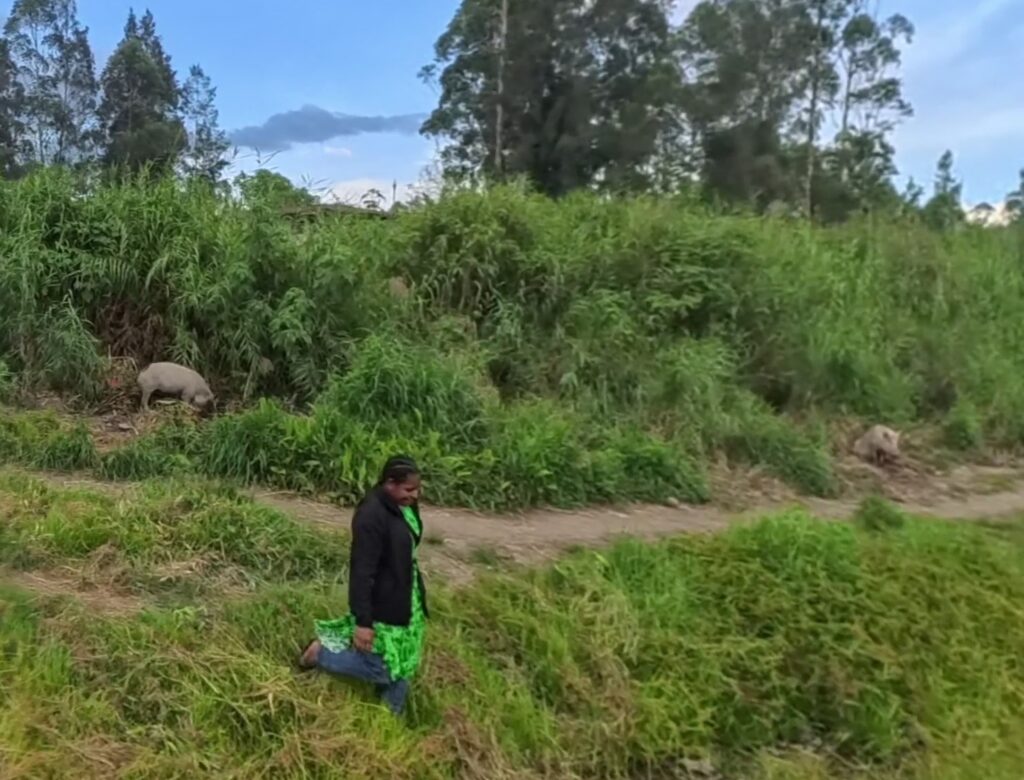
and even drivers drinking beer and showing it to us!
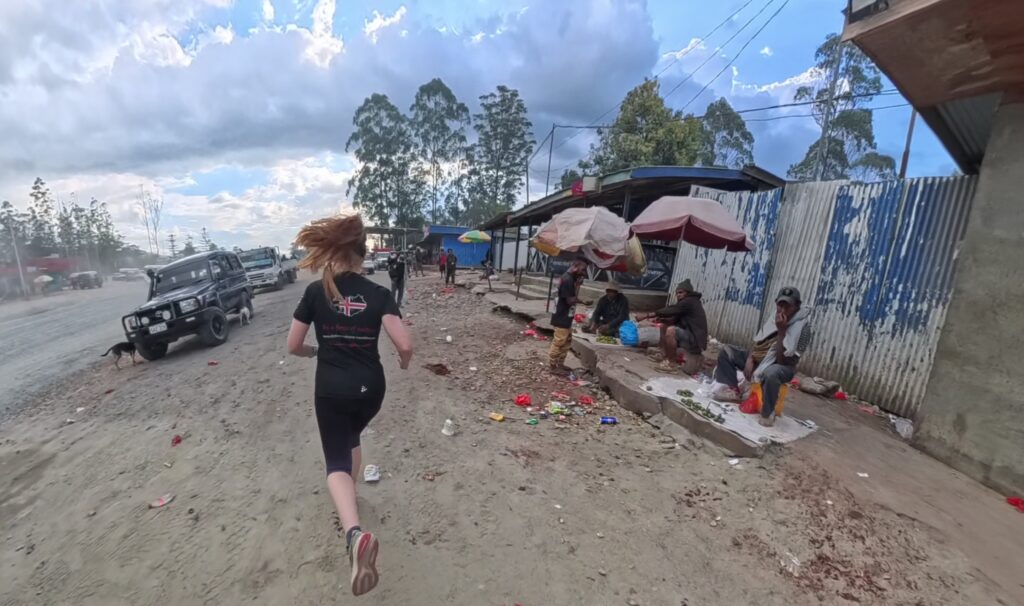
At kilometer 4, lightning flashed dramatically across the sky. By the time heavy rain came, however, we were safely back at the hotel.
Junior get off the van and started running with us saying “we gotta stop now”, because of the rain or because he was getting nervous as we were approaching the urban area.
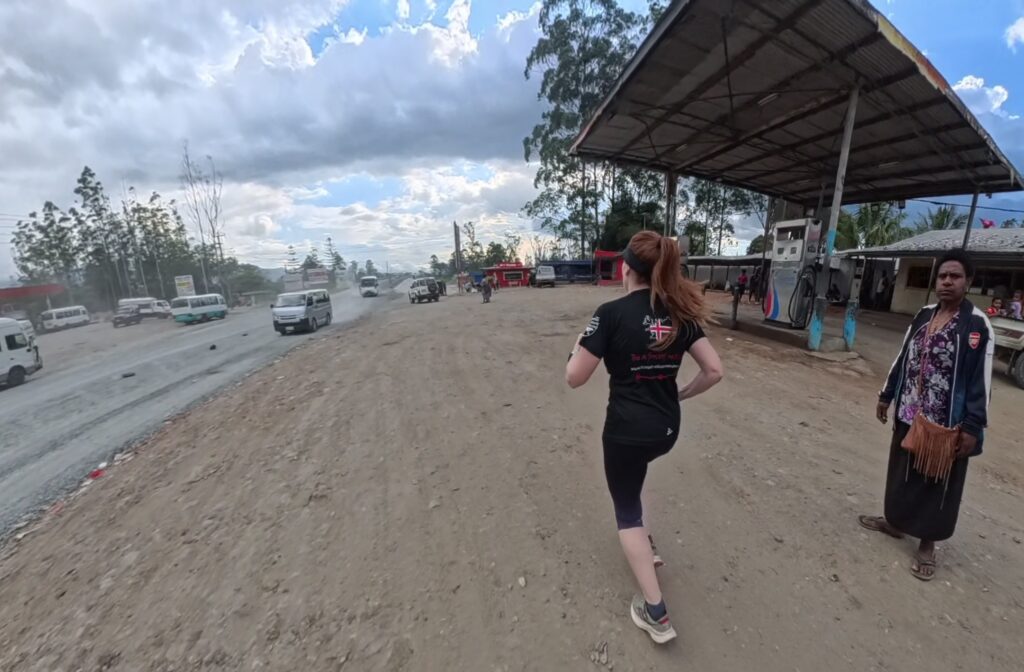
But we only had 300 meters left to complete our 5k so we continued, just in time to watch a rugby stadium where a match was taking place…

so we entered the grounds and we finished our 5k run there! Locals laughed at us, thinking we were crazy, but in a fun way.
Later, however, we heard shouting and fighting outside our hotel, police firing shots to break up a brawl. A stark reminder that PNG is not always safe, and we have been lucky.
Still, running through Mount Hagen with locals cheering us on, just after witnessing the extraordinary festival, is an experience I’ll never forget. 🌈🏃
🏃♀️ 7K Run Down Mount Hagen – Another Highlands Adventure! 🏃♂️
We kicked off this unforgettable run from a spot just above Rondon Ridge, perched on Kum Mountain—part of the outer fringes of the Kubor Range in Papua New Guinea’s Western Highlands Province. Starting at about 2,300 meters above sea level, the trail immediately welcomed us with the magic of the highlands: cloud-forested slopes, orchids, rainforest alive with birds (including the famous Birds of Paradise 🕊️)), and well-kept lodge grounds.
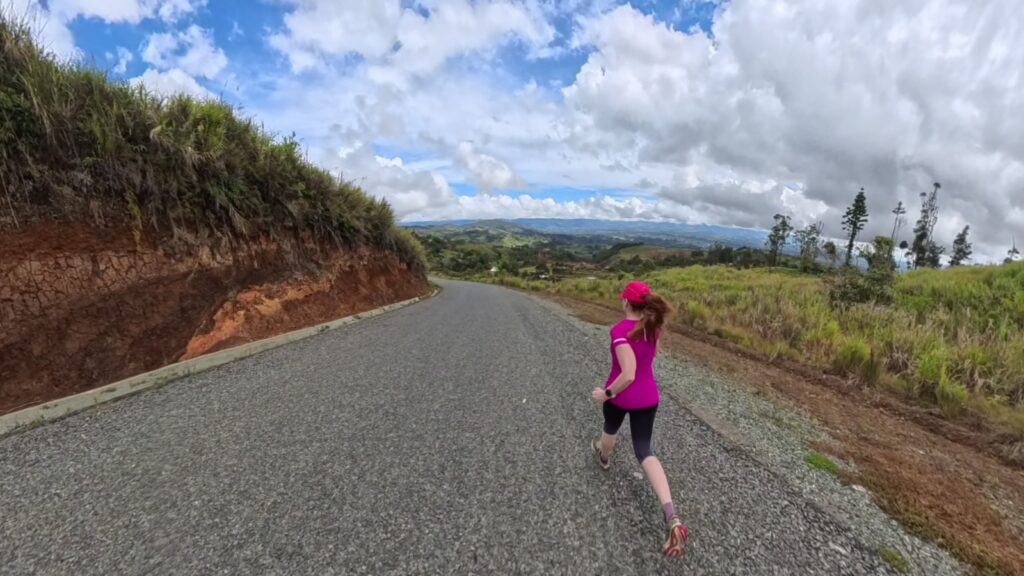
The mist still hung on the peaks, drifting slowly toward us, but the conditions were perfect: cool air, no glaring sun, and that exhilarating freshness that makes you want to run.
500 meters of descend
At first, we had to be cautious not to let gravity pull us too fast downhill, especially on the steeper trail. Soon, the dirt gave way to a paved road, and the landscape opened up into something spectacular. From our vantage point, we could see some of the giants of PNG’s Highlands:
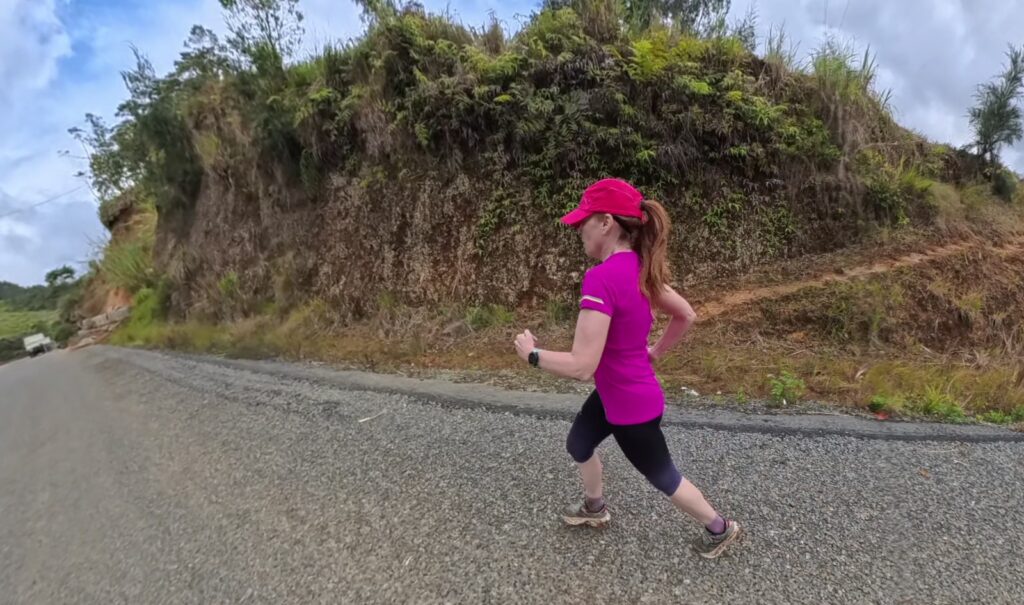
- Mount Giluwe – the second-highest mountain in Papua New Guinea, and the highest volcano on the Australian continent.
- Mount Hagen Volcano / Hagen Range – an extinct stratovolcano towering at 3,796 meters, just across the valley 🏔️.
The contrast from the day before was striking: at 6 a.m. the valley had been entirely blanketed in mist, like a rolling ocean of clouds. But today, starting at 11 a.m., the views were crystal-clear, stretching endlessly over the Wahgi Valley.
We were fast… very fast!
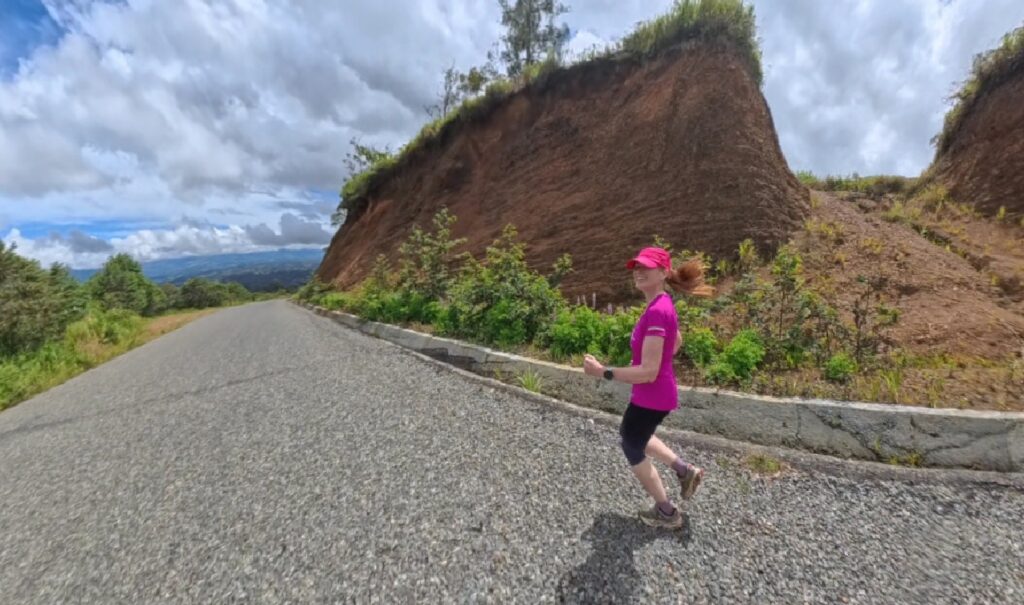
Along the way, we passed locals walking the road or manning small shops. One shop had a clear sign out front: “No Credit!” The people were warm and cheerful, calling out “hello” and “good morning” as we passed. Even a road crew stopped their work to wave us on 👋. The energy was infectious.
At one point, I checked Strava later and saw it had marked my “second fastest 5k in your lifetime”—proof of just how much downhill momentum we carried!
Junior deserted us
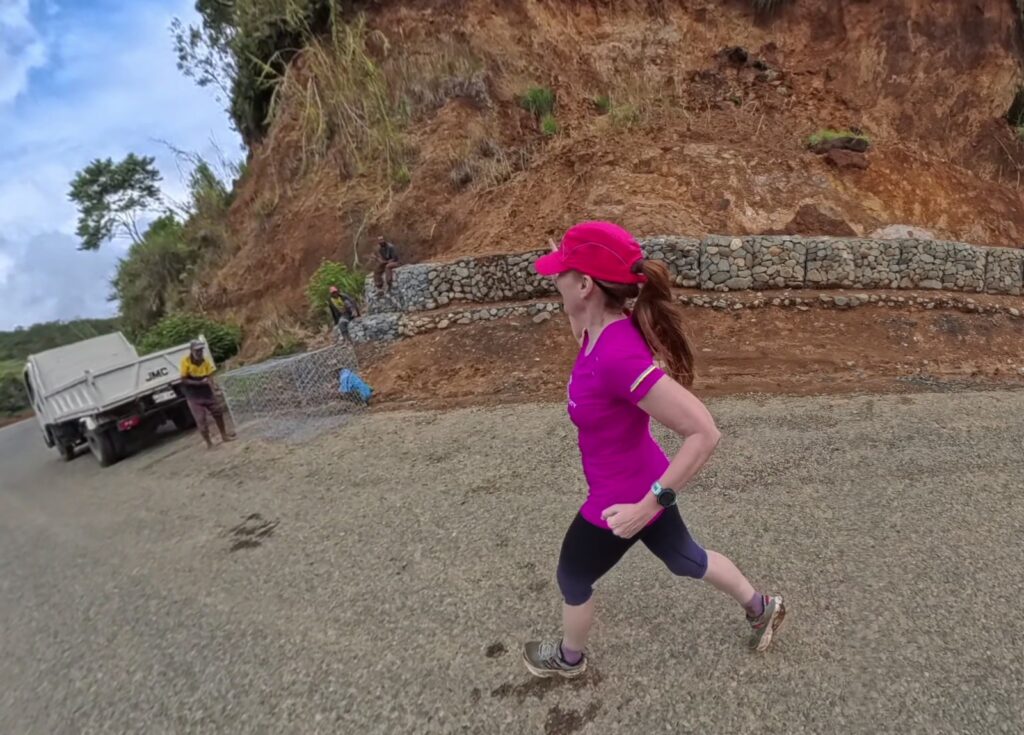
Our guide Junior had promised he’d join us for the run, but in the end he stayed in the van as our “supporting staff.” Having a van rolling alongside us felt surreal—almost like we were elite athletes with a crew 🚐. Around kilometer 4.5, the sun broke through and we got thirsty. The van pulled up, guides jumped out, and handed us water bottles. For a moment, we felt like pros.
The terrain shifted as we went: we left dense montane forest behind and entered the fertile Wahgi Valley, with its patchwork of coffee gardens and village farmland.
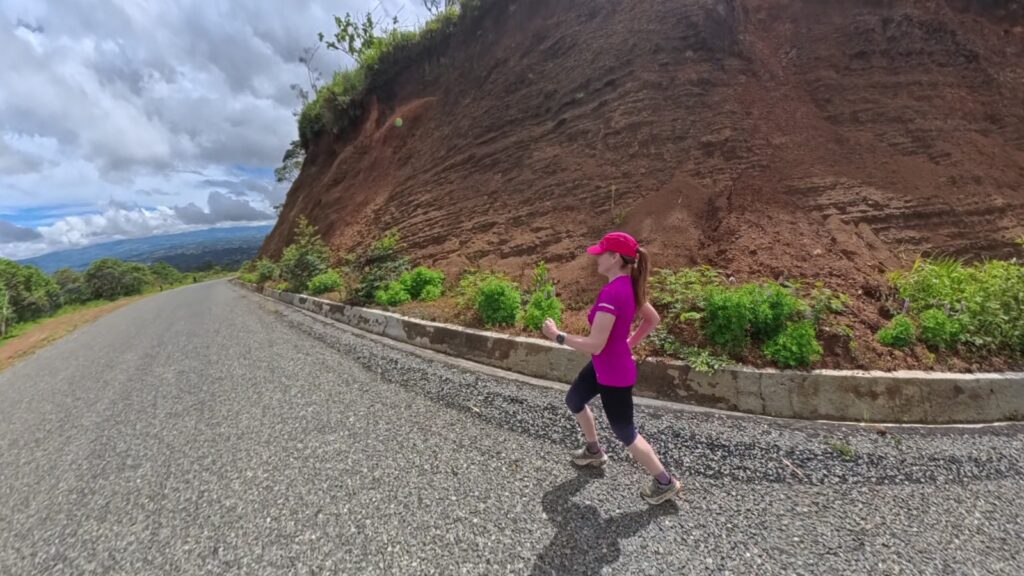
Two metal bridges carried us across creeks we’d seen the day before—so we knew only one remained. Sure enough, after crossing the third bridge, the road kicked back steeply uphill. The climb was brutal in the midday sun 🌞, but we pushed through, quads burning, until we reached the outskirts of Mount Hagen.
Providing entertainment to the locals
We had chosen a special destination for our finish: the Holy Trinity Teachers College. The decision proved spot-on—it turned into a total show! Children crowded around, some inside the school compound, others outside at stalls. They laughed, shouted greetings, and a few cheekily asked for money, though more in play than in seriousness 😄.

One teacher stopped me with a puzzled look:
“Why are you running?”
All I could blurt out was:
“To do some exercise.”
Not the most brilliant answer! I only hoped she wasn’t the PE teacher. Roger, running right behind me, overheard and confirmed it with a grin.
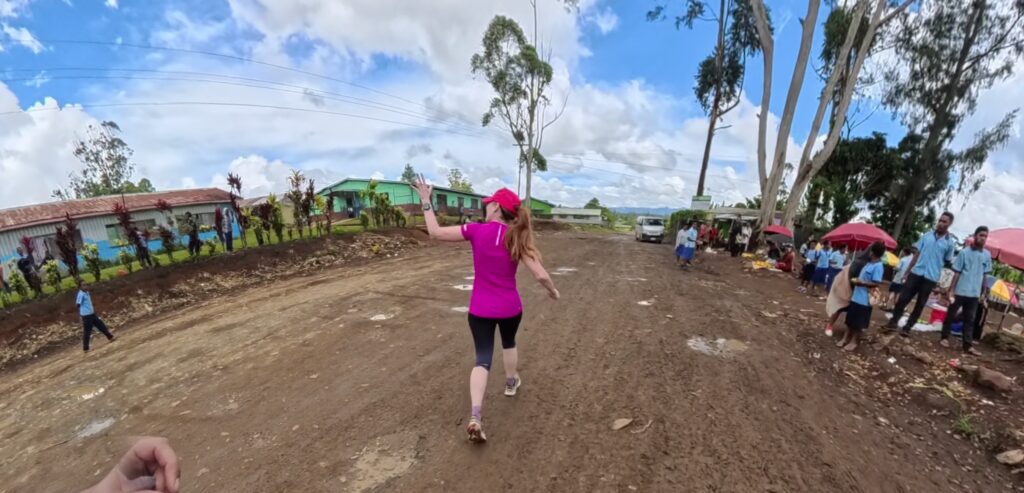
The college itself is a large, fenced compound, though the entrances (and much of Mount Hagen) are cluttered with rubbish and plastic waste. The road turned muddy, with puddles of dirty water. As I dodged them, a Toyota truck with three guys sitting casually in the back—very typical of the region—cut across in front of me, forcing me to stop for a moment 🚙.

Finally, we reached the Holy Trinity Teachers College sign, where we were greeted by our guides stepping out of the van, locals, and a small crowd of kids. We capped the run with a celebratory group picture 📸!
Reflections
This 7k descent dropped us more than 500 meters in elevation—and trust me, downhill running is no easy feat. The constant eccentric pounding hammered our quads, stressed our joints, and demanded sharp focus to avoid slipping. Add in the altitude, a few sneaky uphill stretches under the sun, and you’ve got a workout that tested us in every way.
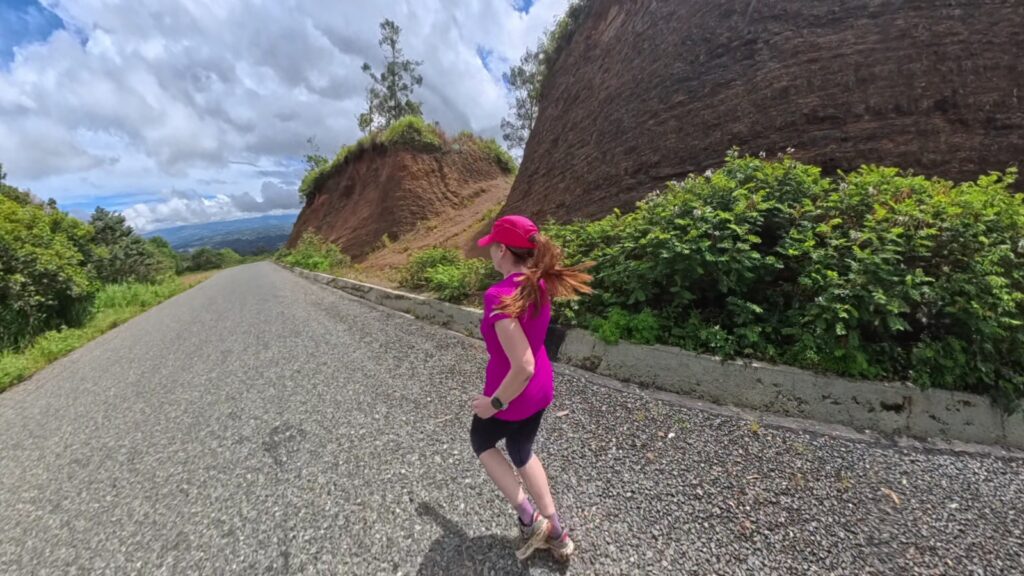
But the reward? Breathtaking views, the thrill of highland running, and unforgettable encounters with the people of Mount Hagen. It was more than a run—it was a travel experience stitched together step by step.
And yes, Roger even picked up a random ace card from the roadside ♠️, now our official souvenir of this Highlands adventure.
🍜 What to Eat in Papua New Guinea if You Are a Runner 🍽️🏃♂️
Running in Mount Hagen means fueling up right—because those highland trails don’t run themselves! Here’s a quick guide to local eats that’ll keep your legs moving and your belly happy, split into two essentials: carboloading before your run and protein recovery after. Let’s fuel like a true PNG runner—with a dash of flavor and fun! 😄
Before the Run: Carboloading 🚀🍚
- Sago pudding — This traditional starchy delight is like PNG’s version of quick-burning fuel. Think of it as the high-carb powerhouse that’ll keep your energy steady while you conquer those hills. Bonus: it’s kind of like eating a delicious, slightly gooey jelly. Weird, but works!
- Sweet potatoes (Kumara) — A staple in the Highlands, these orange beauties are packed with complex carbs and taste way better than your average pre-run snack. Plus, they’ll give you that natural, slow-release energy you need without the sugar crash.
- Bananas — Not very local, but hey, they grow wild here and are the ultimate runner’s snack. Portable, tasty, and potassium-packed. Grab one on your way out the door!
After the Run: Protein Recovery 🍖💪
- Chicken or pork skewers (Mumu style) — Grilled over hot coals in a traditional underground oven, these tender, smoky meats are perfect for muscle recovery. Plus, nothing says “I earned this” like eating something cooked in a pit!
- Fish from the nearby rivers — Fresh, lean, and local—perfect to help rebuild tired muscles without weighing you down. Just watch out for the little bones!
- Leafy greens and root veggies — Often served alongside meat, these nutrient-packed sides help replenish vitamins and minerals. Bonus: they’re delicious and will have you feeling strong enough to run again the next day.
Running in Mount Hagen isn’t just about the miles—it’s about soaking in culture, scenery, and yes, the food that fuels your adventure. So eat well, run strong, and maybe leave room for a cheeky kaukau or two! 😉
And if you are not feeling adventours…. in PNG you can also find international options.
We carboloaded with Italian pasta…
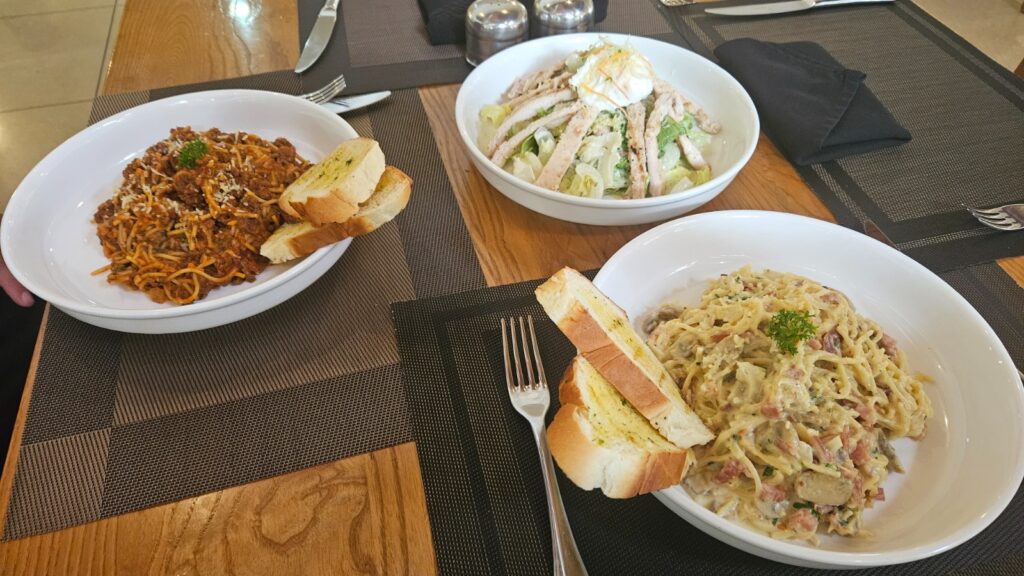
And, after our run, we enjoyed a “Sunday BBQ” that was the very definition of “protein recovery”!


Useful information
🏃 Running in Papua New Guinea.
🗓️ When: August if you want to see the wonderful Mount Hagen festival! August is also dry season, which helps. The rain in PNG can be very strong!
👟 Better bring shoes for trail, as even running on roads is quite a muddy experience!
✅ The possiblity of running in a really off-the-beaten-track place, as fascinating as unique!
⚠️ The safety concerns aforementioned. It can get tricky so always run during the day and in places which have been cleared by local experts / guides.

Map
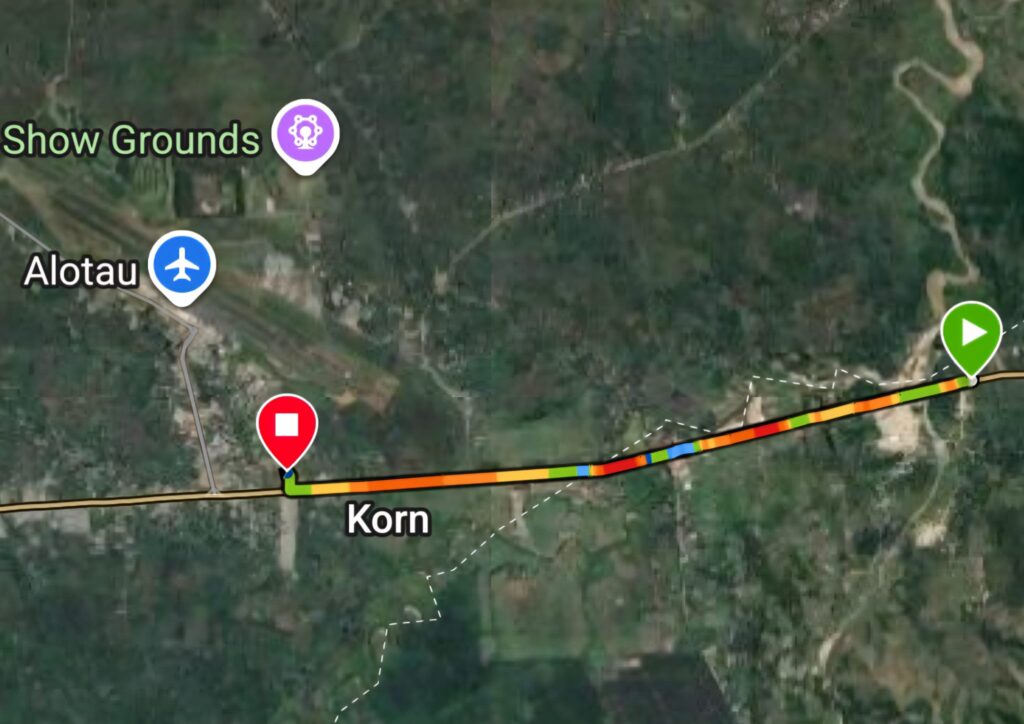
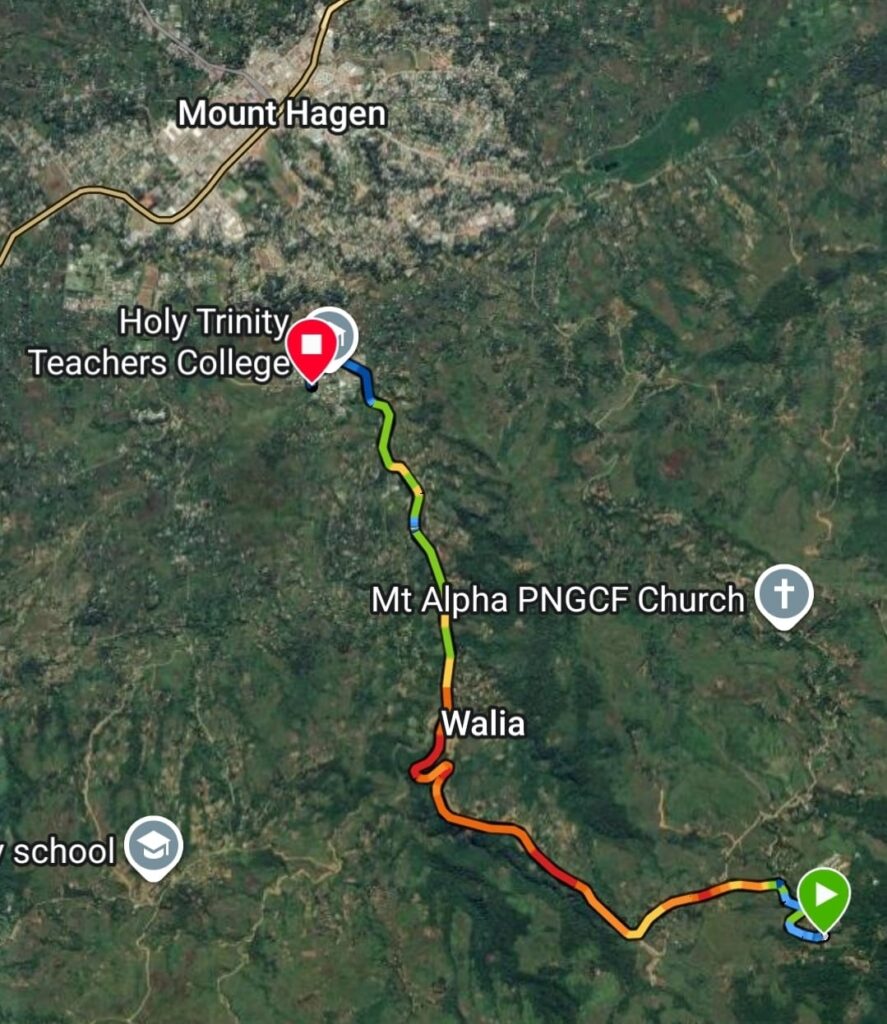
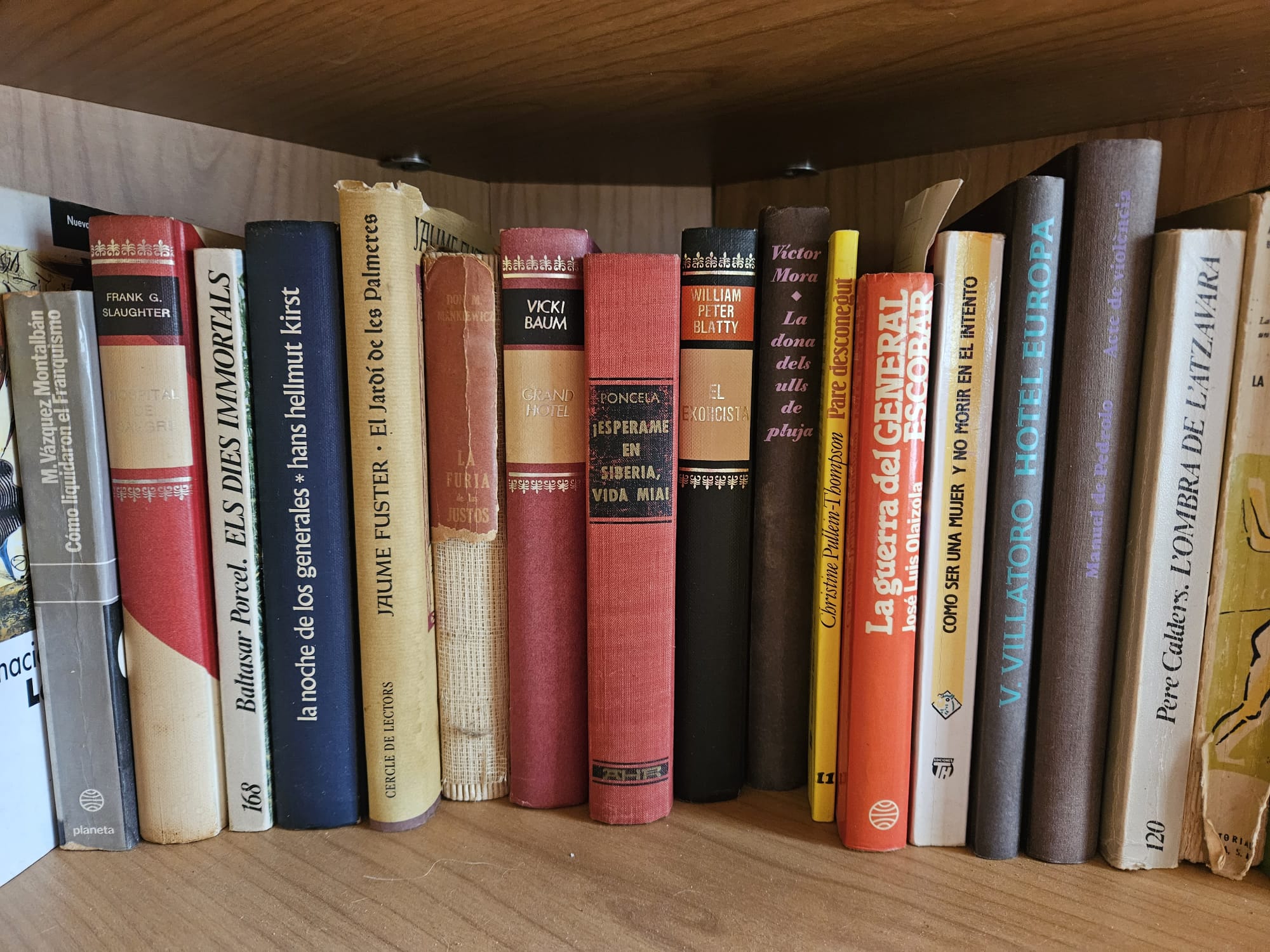
One book
I offer you two books, since the flights to Papua New Guinea are usually long 😝.
They are very different, thus you can choose your poison!
The first one is “Mister Pip” by Lloyd Jones.
“Mister Pip” offers a poignant glimpse into the complexities of life in Papua New Guinea during a period of conflict.
Reading this novel provides travelers with a deeper understanding of the country’s history, the impact of colonialism, and the enduring power of storytelling. It serves as a reminder of the importance of cultural sensitivity and the value of personal connections when exploring new regions.
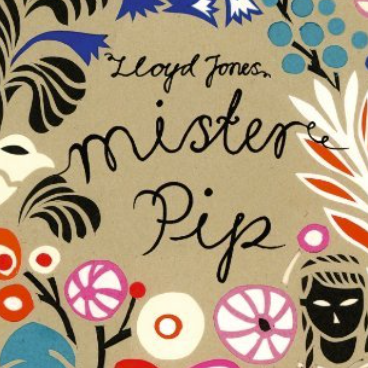
Plot: Set against the backdrop of civil unrest in Bougainville, Papua New Guinea, “Mister Pip” follows the story of Matilda, a young girl whose life is transformed by the teachings of Mr. Watts, the last white man in the village. Through his readings of Charles Dickens’ “Great Expectations,” Matilda and her classmates embark on a journey of imagination and resilience, finding solace and strength amidst the turmoil surrounding them.
The second one is “Beat not the bones” by Charlotte Jay.
Reading Beat Not the Bones before travelling to Papua New Guinea is like stepping into the tropical heat and mystery before you even board the plane 🌴📖.
Charlotte Jay’s atmospheric thriller captures the tension, beauty, and complexity of life in a remote colonial outpost, giving you a taste of the land’s contrasts: from lush jungles to tense bureaucratic offices. It can deepen your sense of place when you’re there, making the sounds, scents, and sights feel layered with hidden stories and histories 🌺🔍.
The book’s mix of suspense and cultural observation offers a richer, more thoughtful lens through which to see your destination.
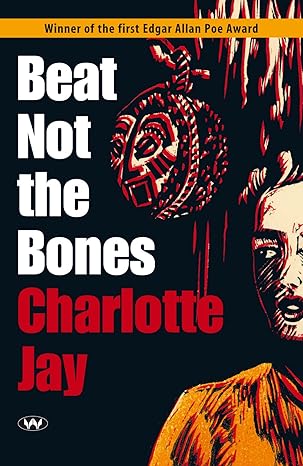
Plot: The story follows Stella Warwick, a young widow who arrives in Papua to uncover the truth behind her husband’s mysterious death 🕵️♀️. Officially declared a suicide, his passing raises too many questions, leading Stella into a shadowy world of secrets, corruption, and colonial politics 🌑⚡.
As she pushes past evasive answers and encounters a cast of vivid, sometimes unsettling characters, the tension builds toward revelations that challenge her understanding of both her husband and the place he called home.
